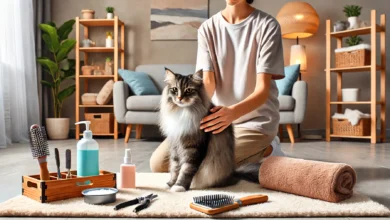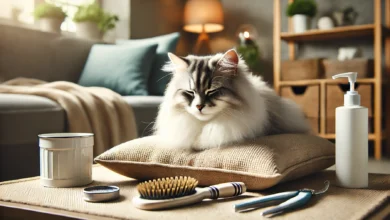The Benefits of Regular Grooming for Cat Health
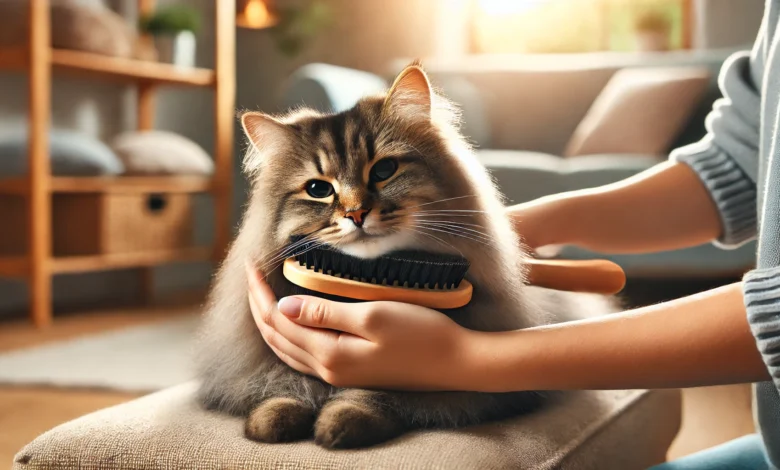
Grooming your cat is more than an opportunity to bond with your feline companion; it is part of vital health care.
Regular grooming prevents a range of health problems, improves the condition of your cat’s coat, and can even reduce the amount of shedding at home.
As a responsible feline owner, you want to ensure that you’re cognizant of how grooming can positively affect your cat’s mental and physical health, and that you do it frequently enough to observe these positive changes.
But why is regular grooming so crucial, and how does this contribute to the well-being of your feline companion?
Let’s find out.
Table of Contents
Why Regular Grooming Is So Important for Your Cat’s Well-being
Grooming isn’t just about merely making your cat look good but is also a major concern in the issues of comfort and health in felines.
Notwithstanding their nature as self-groomers, they do need human assistance to keep their coat, skin, and everything else clean.
Over time, grime, hair, and oils will build up in your cat’s fur and, unless regularly groomed, a suite of problems may become apparent.
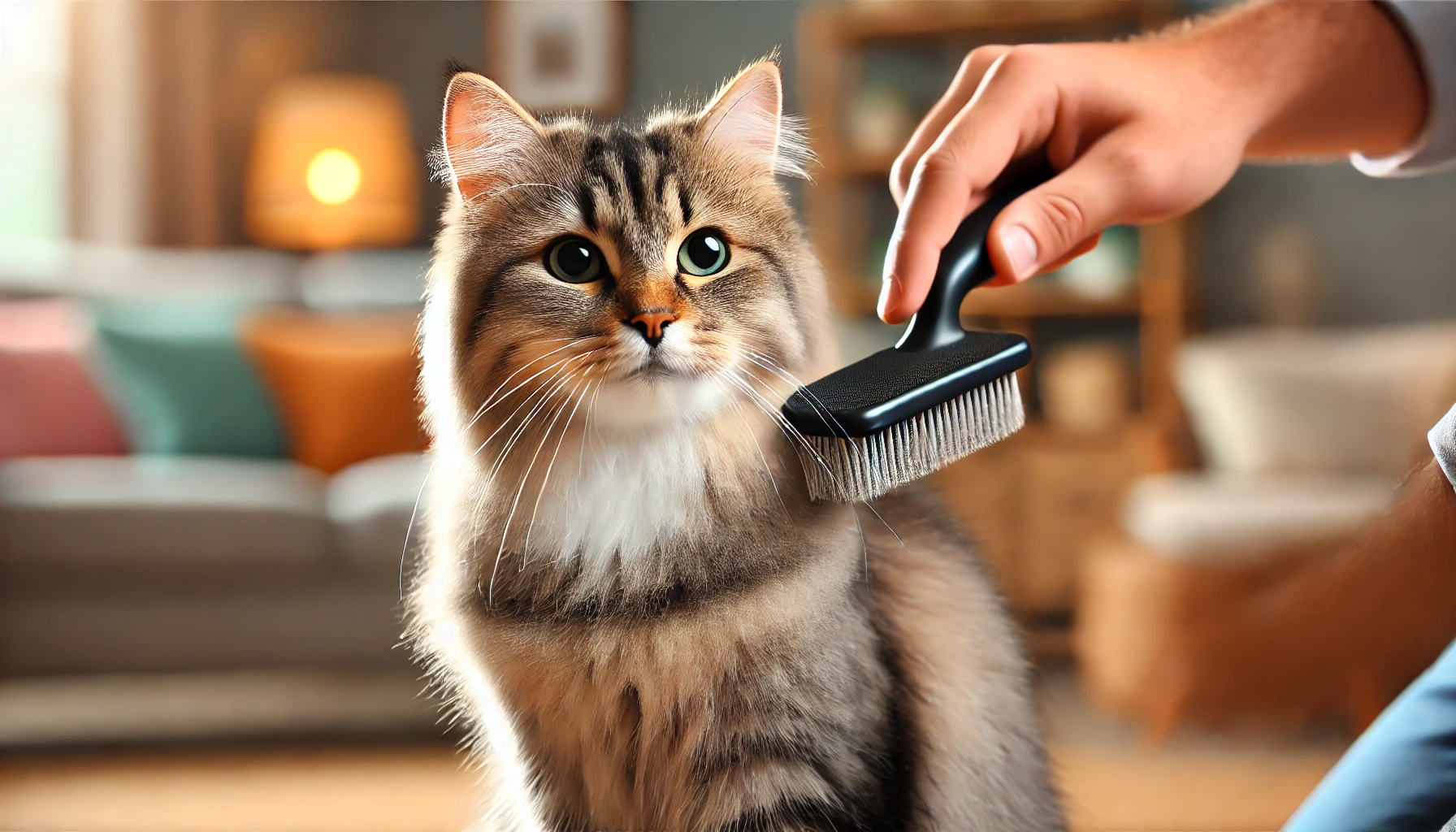
Understanding the Importance of Regular Grooming
One of the major reasons regular grooming is important is because it helps in keeping your cat’s coat and skin healthy.
Cats, while grooming themselves, often leave certain areas, especially at their back or under their legs.
Regular brushing may remove loose fur and prevent matting, which can cause discomfort or even skin infections if left untreated.
Besides this, grooming circulates natural oils produced by your cat’s skin, promoting a shiny, healthy coat.
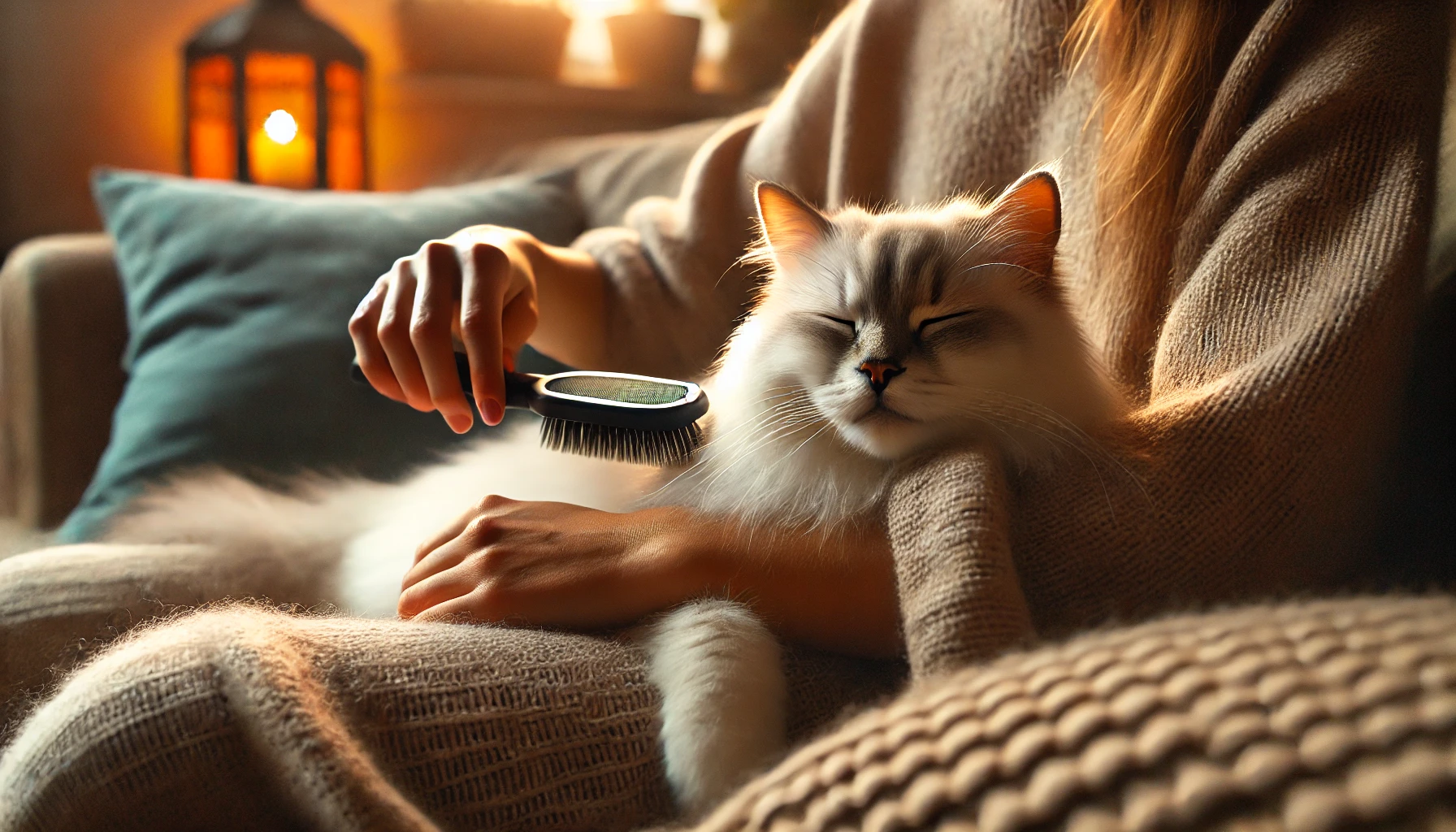
How Grooming Affects Your Cat’s Mental Health
Grooming does not only deal with physical health but also has an enormous effect on your cat’s mental well-being.
Regular grooming sessions are one of the best ways to bond with your cat, allowing your pet to feel comforted and relaxed.
Cats often connect grooming with positive reinforcement that helps them feel secure and loved.
In addition, the frequency of brushing and grooming will reduce stress and anxiety, common conditions among domesticated cats.
Indeed, most cats love the soothing rhythm of grooming sessions and might come to expect the same as a source of gratification.
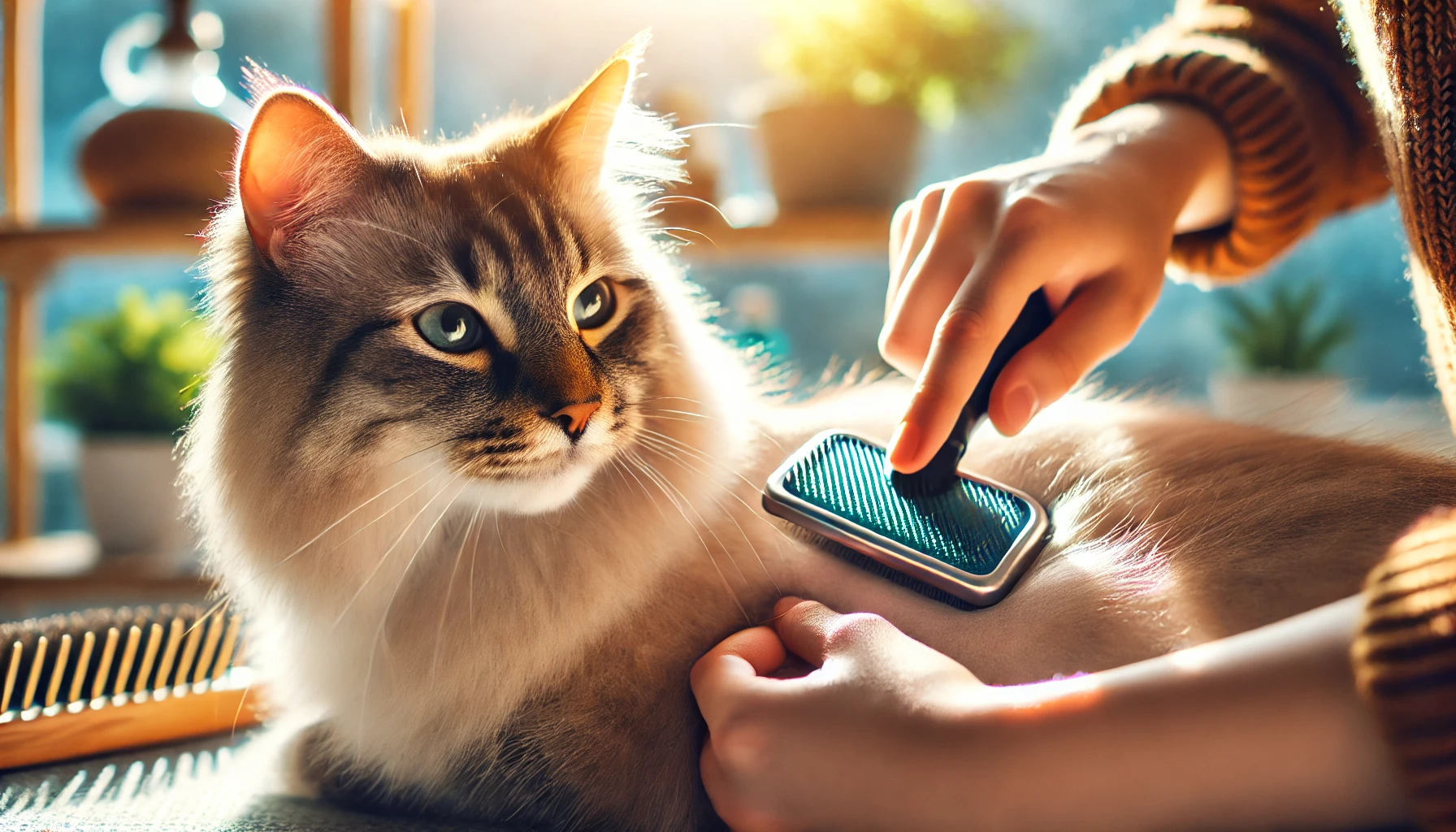
Connection Between Grooming and Physical Health
Besides the psychological benefits that come with regular grooming, your cat’s general body health largely depends on it.
Regular brushing can help reduce the number of hairballs your cat will swallow.
Cats tend to swallow loose fur while grooming themselves, and these hairs have a tendency to block digestion.
Grooming helps avoid this by removing the fur before a cat can swallow it.
Grooming also gives you a chance to look for any abnormalities in the cat’s skin, such as lumps, bumps, or parasites, which might be the underlying cause of some health issues.
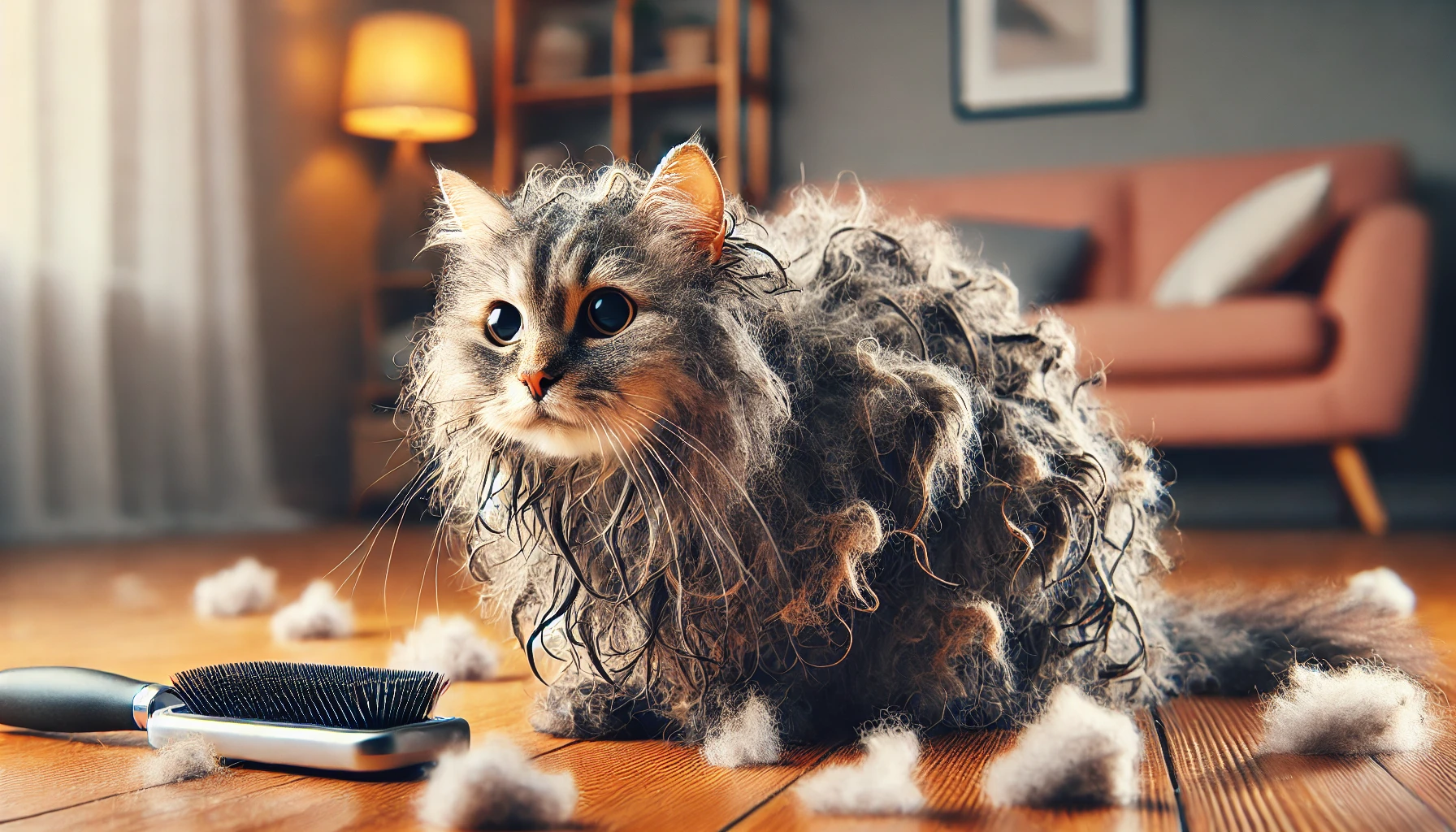
Signs That Your Cat Needs More Grooming
While cats groom themselves, sometimes it is not enough.
There are a few things to look for that may indicate your cat requires additional grooming.
For instance, when the cat begins to shed more than usual or mats start to appear in their fur, that calls for a higher-intensity grooming.
Other possible indications may include dandruff, greasy fur, or a dull coat.
All these signs are meant to help you know when to intervene and get your cat groomed to health.
Regular grooming is essential not only for your cat’s appearance but also for their overall health and comfort. Human assistance helps keep their coat clean and healthy, preventing problems such as skin infections.

Health Benefits from Regular Grooming of Your Cat
Regular grooming is not only aesthetically appealing for your feline friend, but it is also crucial for their general health.
Grooming prevents many health issues that may go unnoticed.
By having your cat regularly groomed, you reduce health risks, improve the condition of their skin, and manage common problems faced by your feline, such as hairballs.
Let’s look further at the health benefits of regular grooming and the great difference this can make to your cat’s life.
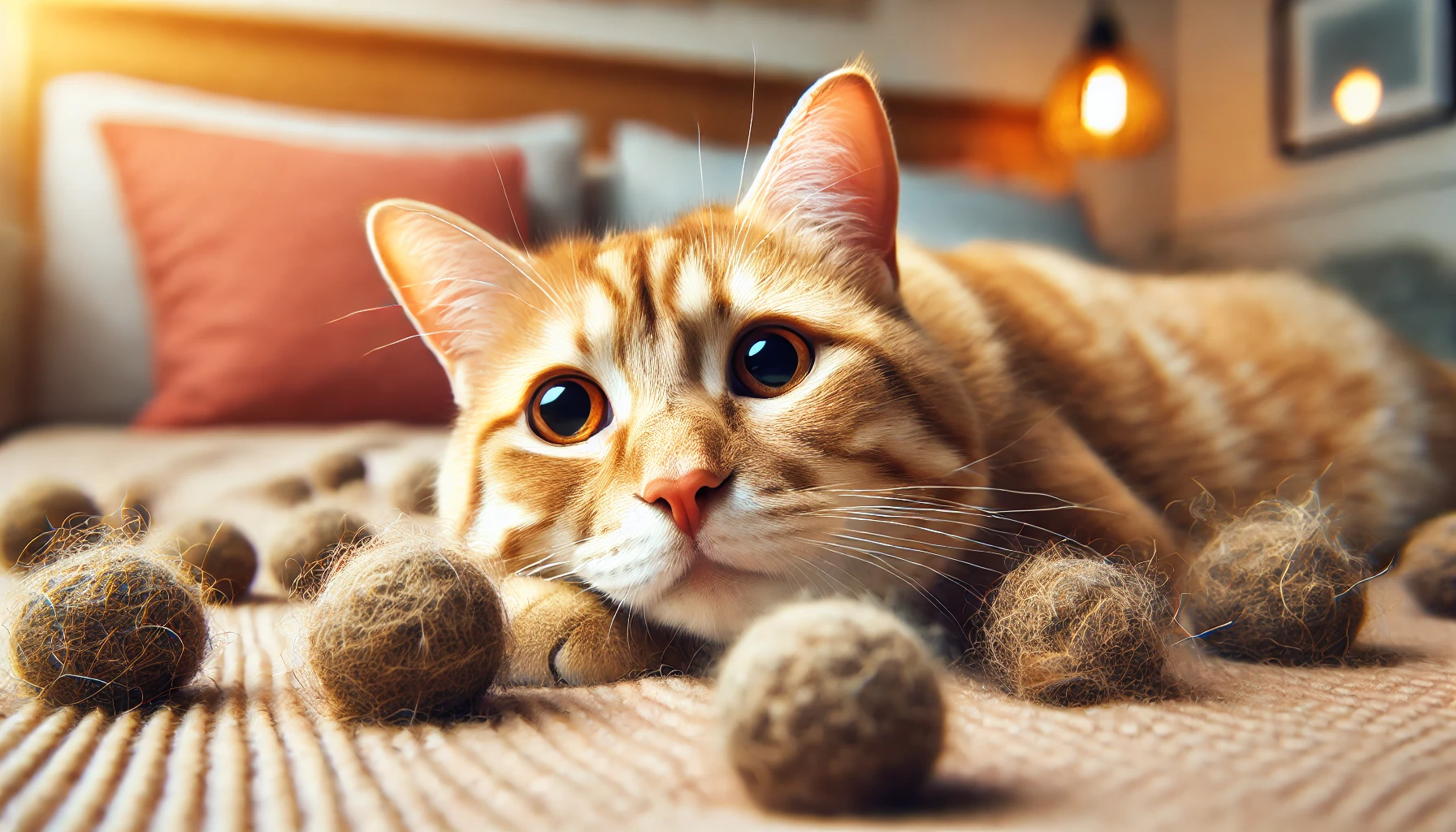
Hairballs and Digestive Problems
One of the major health issues in cats is the formation of hairballs.
Cats naturally ingest loose hair while grooming, and if left unmanaged, it may lead to digestion problems or blockages.
Regular brushing of your cat removes much of the loose fur before it is swallowed, hence considerably minimizing risks related to hairballs.
- Less fur being ingested: Regular grooming eliminates the loose hair that your cat would otherwise swallow.
- Better digestion: By reducing the chance of hairball formation, you avoid possible blockages and digestive distress.
- Increased comfort: Fewer hairballs mean less vomiting and a more comfortable life for your cat.
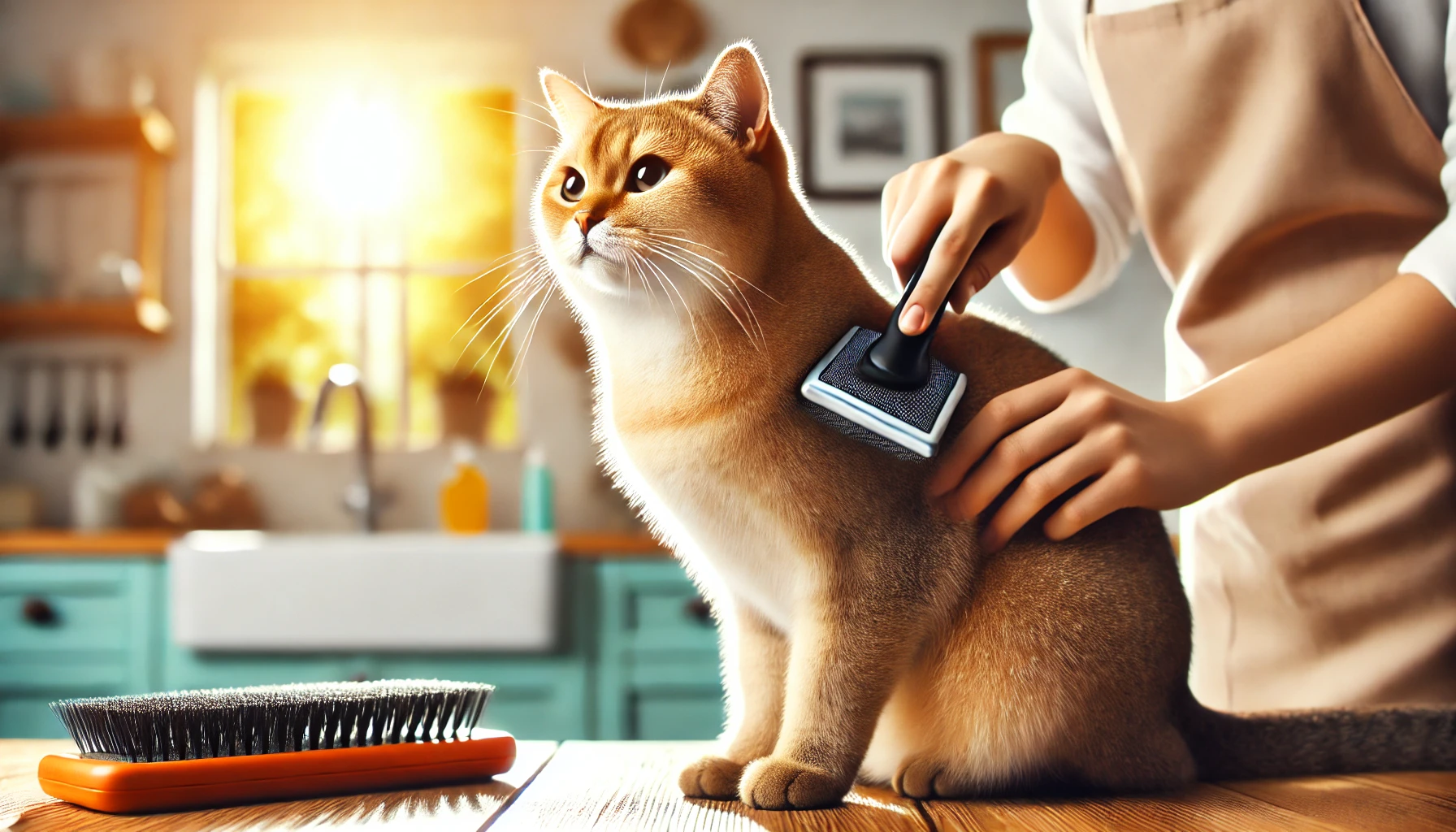
Improving Skin and Coat Condition
Regular grooming of your cat helps to maintain healthy skin and a shiny coat.
Brushing stimulates the skin, promoting better blood circulation and the production of oils.
These natural oils spread across the coat, keeping your cat’s fur soft and smooth without excess grease.
- Healthy skin: Regular grooming ensures proper blood flow, supporting healthy skin.
- Shinier coat: Grooming spreads natural oils, resulting in a softer, shinier coat.
- Reduces skin problems: Regular checks during grooming can help spot skin conditions such as dryness and irritation early.
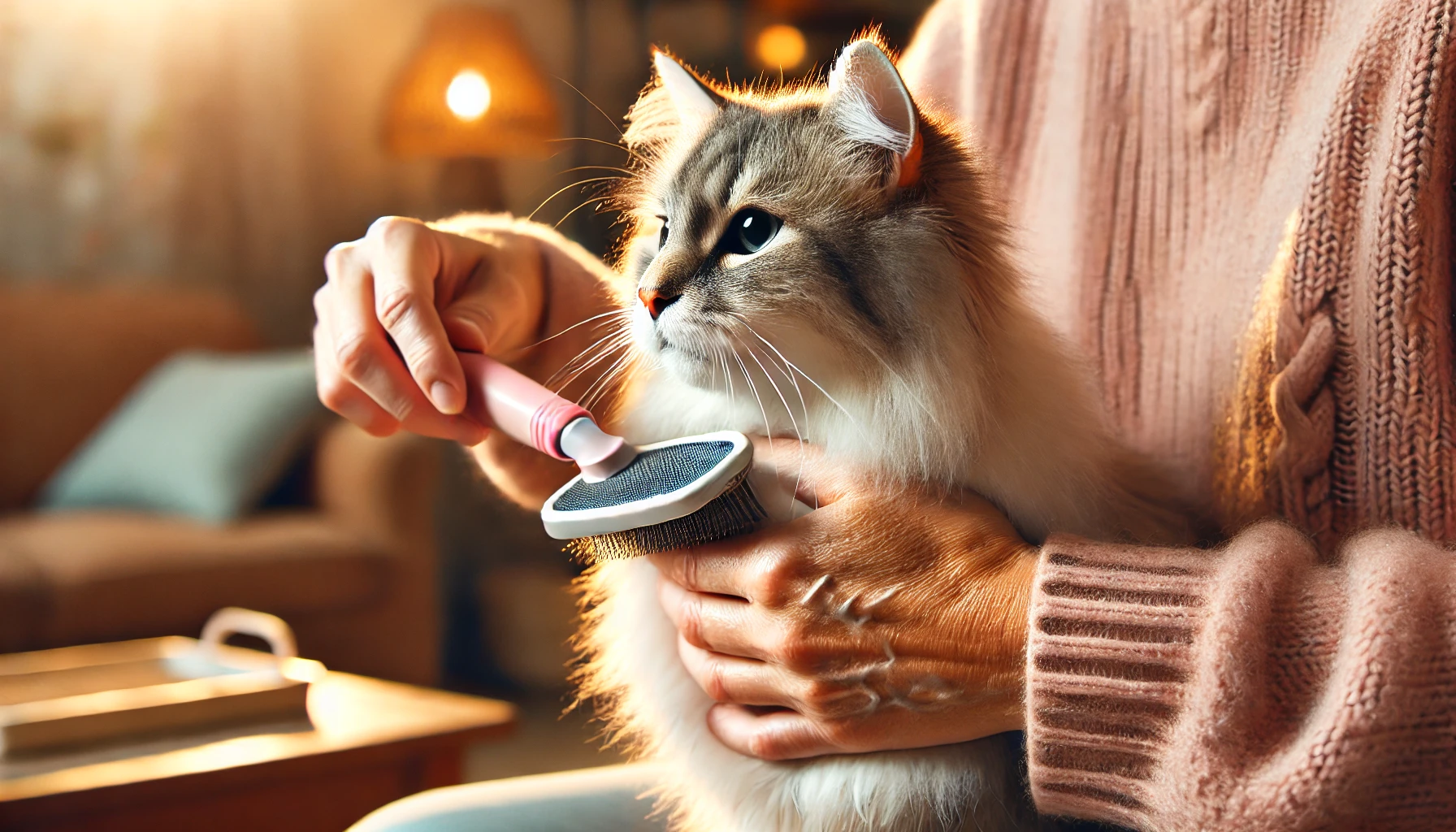
Early Detection of Health Issues
Regular grooming is an excellent opportunity to check your cat for anything unusual on their body.
While brushing, you can identify lumps, bumps, parasites, or signs of infections.
Early detection can ensure your cat receives treatment sooner, leading to a healthier life.
- Spotting parasites: Grooming helps you identify fleas, ticks, or other parasite infestations early.
- Identifying skin conditions: You can spot redness, irritation, or wounds that might need attention.
- Finding lumps or bumps: Grooming is a quick way to detect growths or tumors, allowing for early diagnosis.
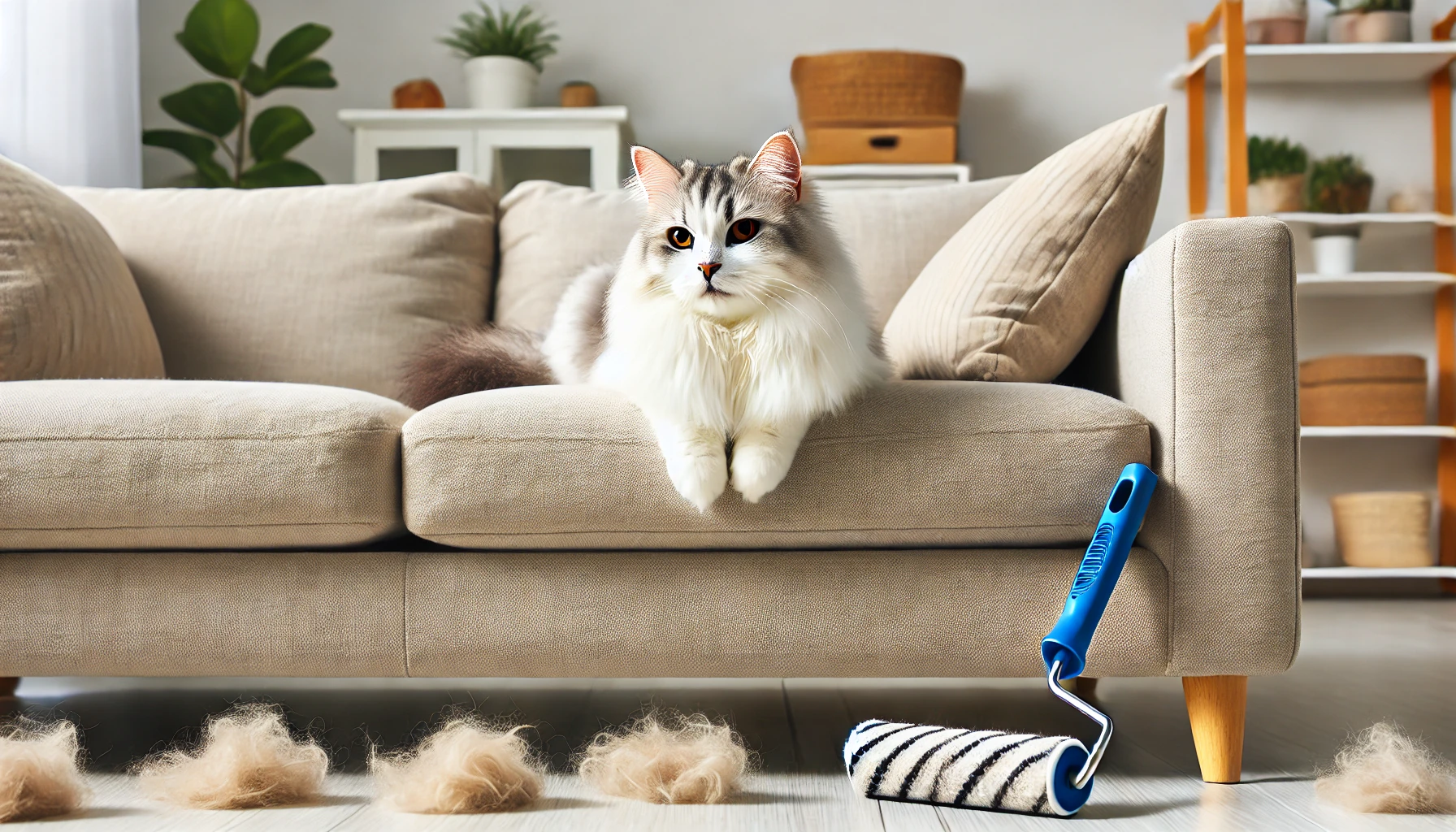
Home Shedding and Allergens Reduction
Regular grooming helps reduce the amount of fur your cat sheds, which in turn reduces allergens in your home.
By removing loose hair and dander, you minimize the amount of fur left on furniture and other surfaces and reduce airborne allergens, creating a more comfortable environment for your family and pet.
- Less fur around the house: Brushing regularly reduces shedding, keeping your home cleaner.
- Allergen control: Grooming reduces loose hair and dander, helping lower potential allergens that might trigger reactions in sensitive individuals.
- Healthier environment: A well-groomed cat creates a more hygienic and comfortable living space for everyone.
Regular grooming prevents health issues, improves skin and coat condition, and reduces the formation of hairballs, ensuring a happier and healthier cat.
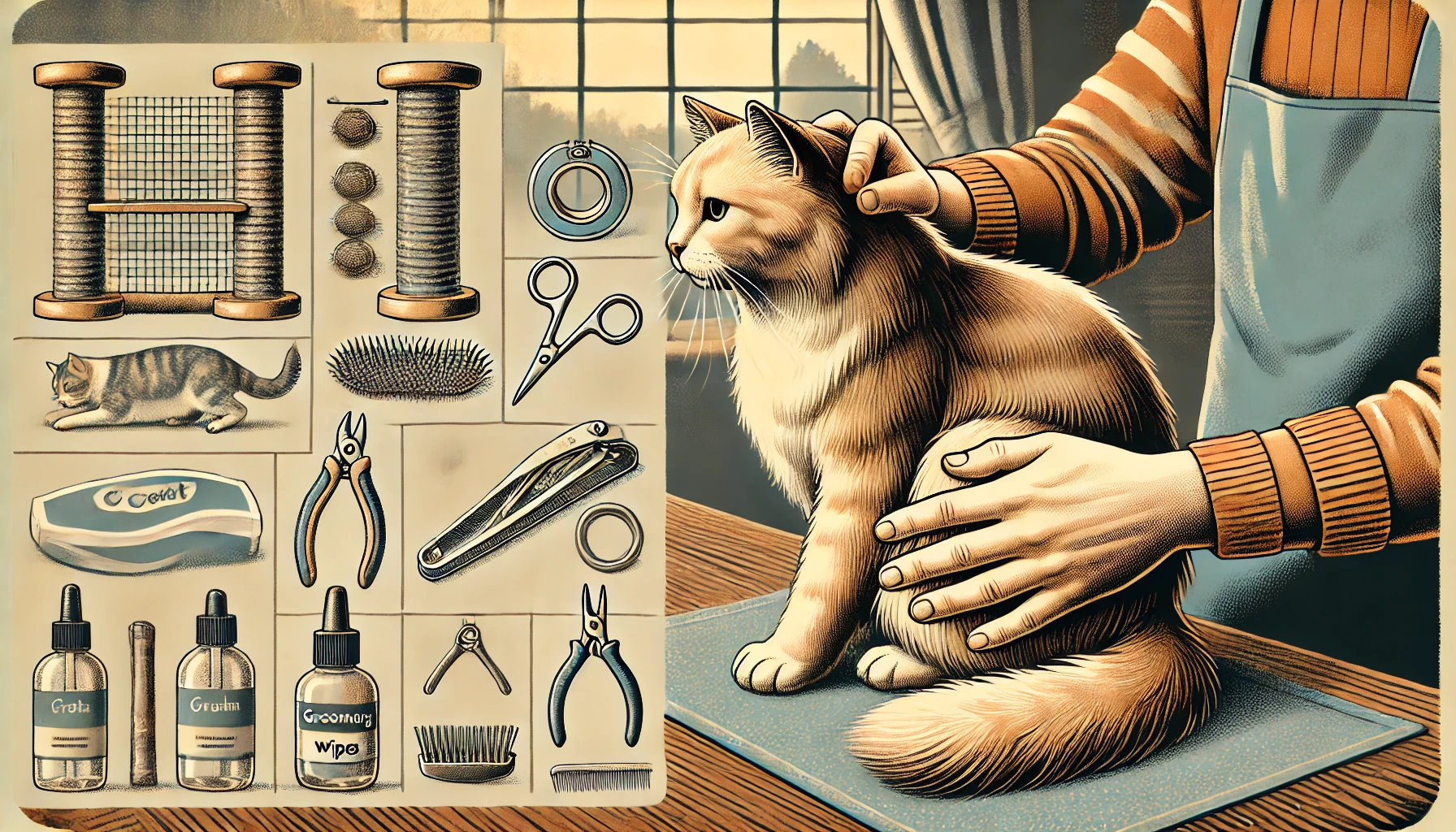
How to Groom Your Cat: A Step-by-Step Guide
Grooming is essential for your cat’s health and well-being.
Sometimes, grooming can be somewhat overwhelming if your cat doesn’t like to be groomed.
However, with the right approach and equipment, it can be an easy and even pleasant experience for both you and your feline friend.
Here is a thorough, step-by-step guide on effective ways of grooming your cat, from brushing to nail trimming.
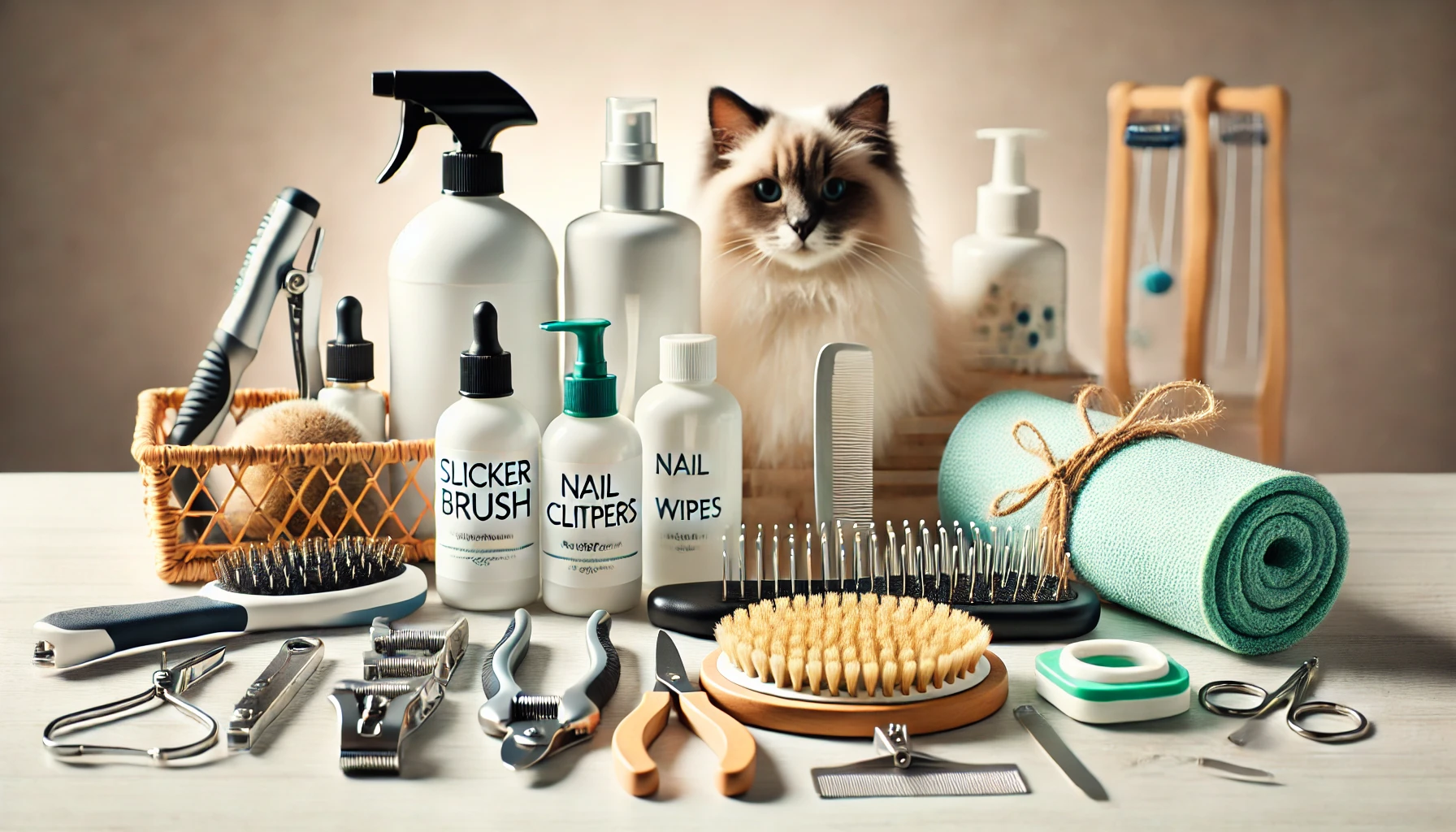
Essential Equipment for Grooming Your Cat
First things first: make sure you have what you need within reach.
Appropriate grooming equipment makes the whole process easier and more pleasant for your cat.
Here are some essentials:
- Brushes and combs: A slicker brush is designed for long-haired cats, while a soft bristle brush is best for short-haired cats. A metal comb will help detangle your cat’s coat.
- Nail clippers: Choose clippers designed for cats for a safe trim.
- Pet-safe shampoo: If you need to bathe your cat, use a mild, cat-specific shampoo that won’t irritate their skin.
- Grooming wipes: These are ideal for quick clean-ups between baths.
- Cat treats: Always have treats on hand to reward your cat for good behavior during grooming.
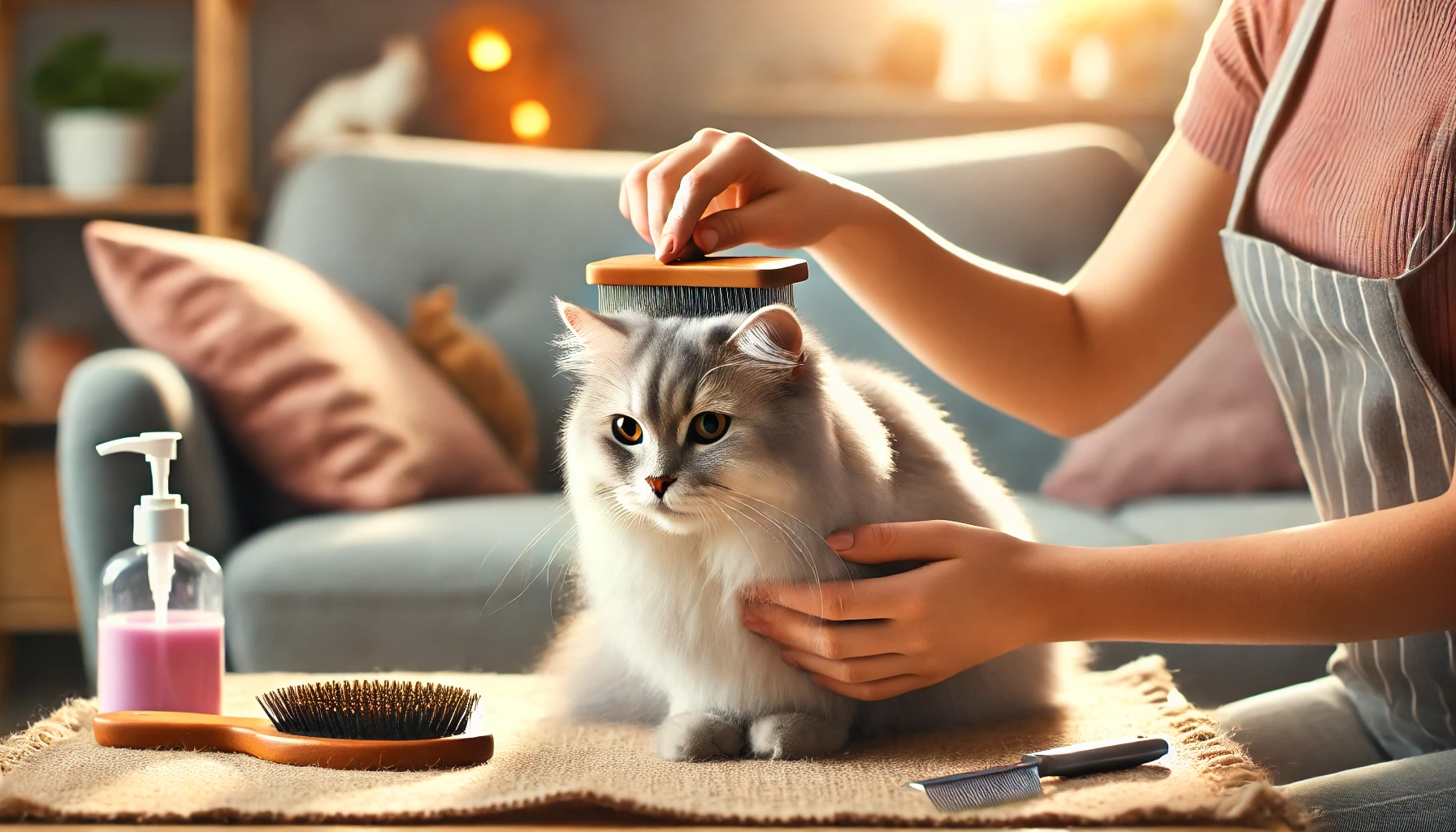
Tips for Brushing Your Cat’s Coat
Regular grooming will remove loose fur, reduce matting—a potential health hazard—and increase the amount of natural oil produced in your cat’s skin for a healthy coat.
Here’s how you can go about brushing:
- Start slowly: Gently brush areas your cat enjoys being touched, like their head or back.
- Be gentle: Use slow, soft strokes to avoid pulling on your cat’s fur, especially if they have sensitive skin.
- Brush in the direction of the fur: Always brush in the direction of fur growth to avoid discomfort or irritation.
- Sensitive areas: Be careful when grooming the belly, under the legs, and behind the ears, as these areas easily get matted.
- Frequency: Long-haired cats may require daily brushing, while short-haired breeds can be brushed a few times a week.
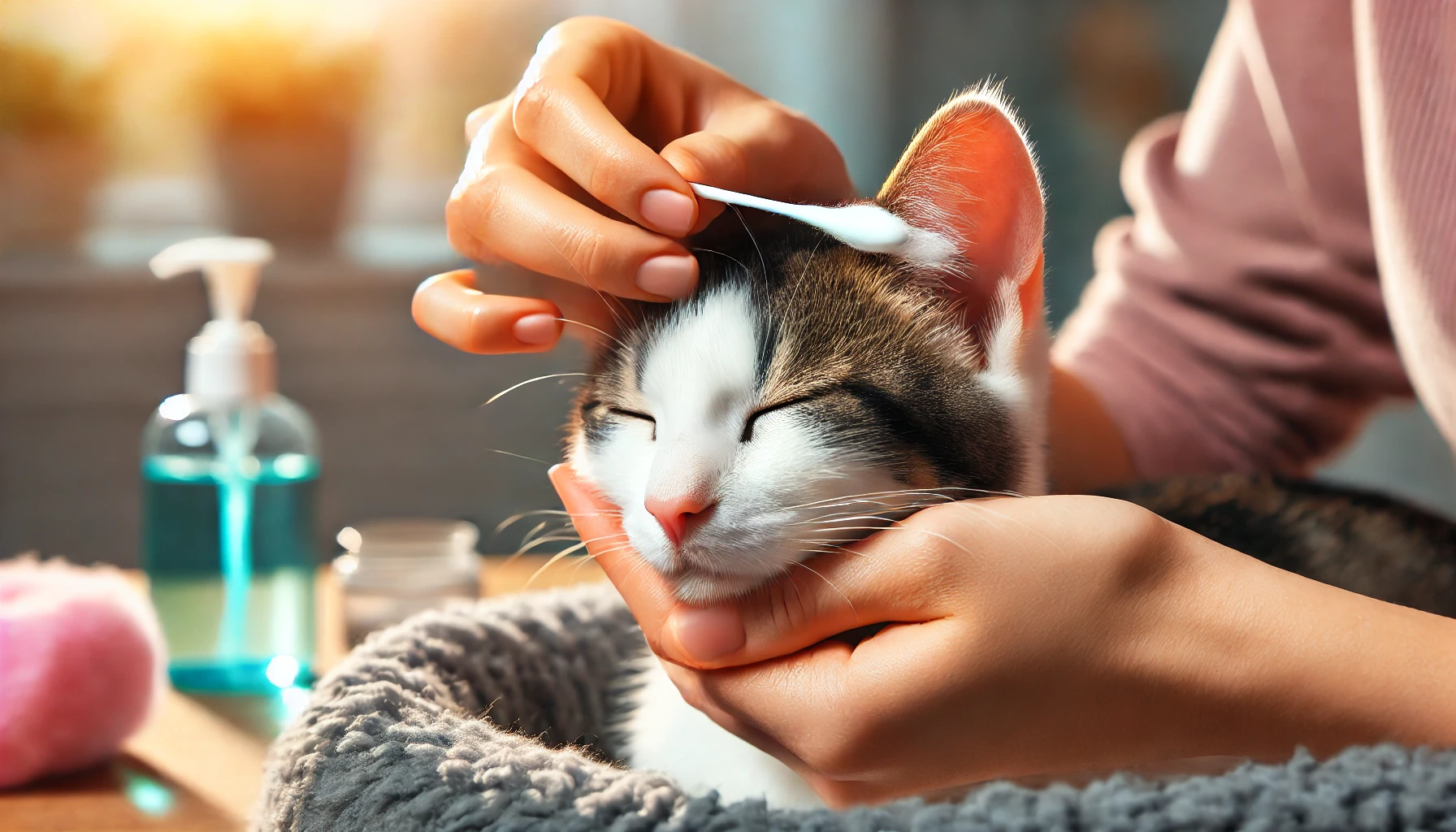
Cleaning Ears, Eyes, and Teeth Safely
In addition to brushing your cat’s coat, you also need to clean their ears, eyes, and teeth.
Here’s how to do this safely:
- Ears: Clean the outer ear with a soft cotton ball or pad without inserting anything into the ear canal.
- Eyes: Gently wipe any discharge or dirt around your cat’s eyes with a damp, soft cloth.
- Teeth: Clean your cat’s teeth at least once a week with a toothbrush and toothpaste designed for cats to prevent dental diseases.
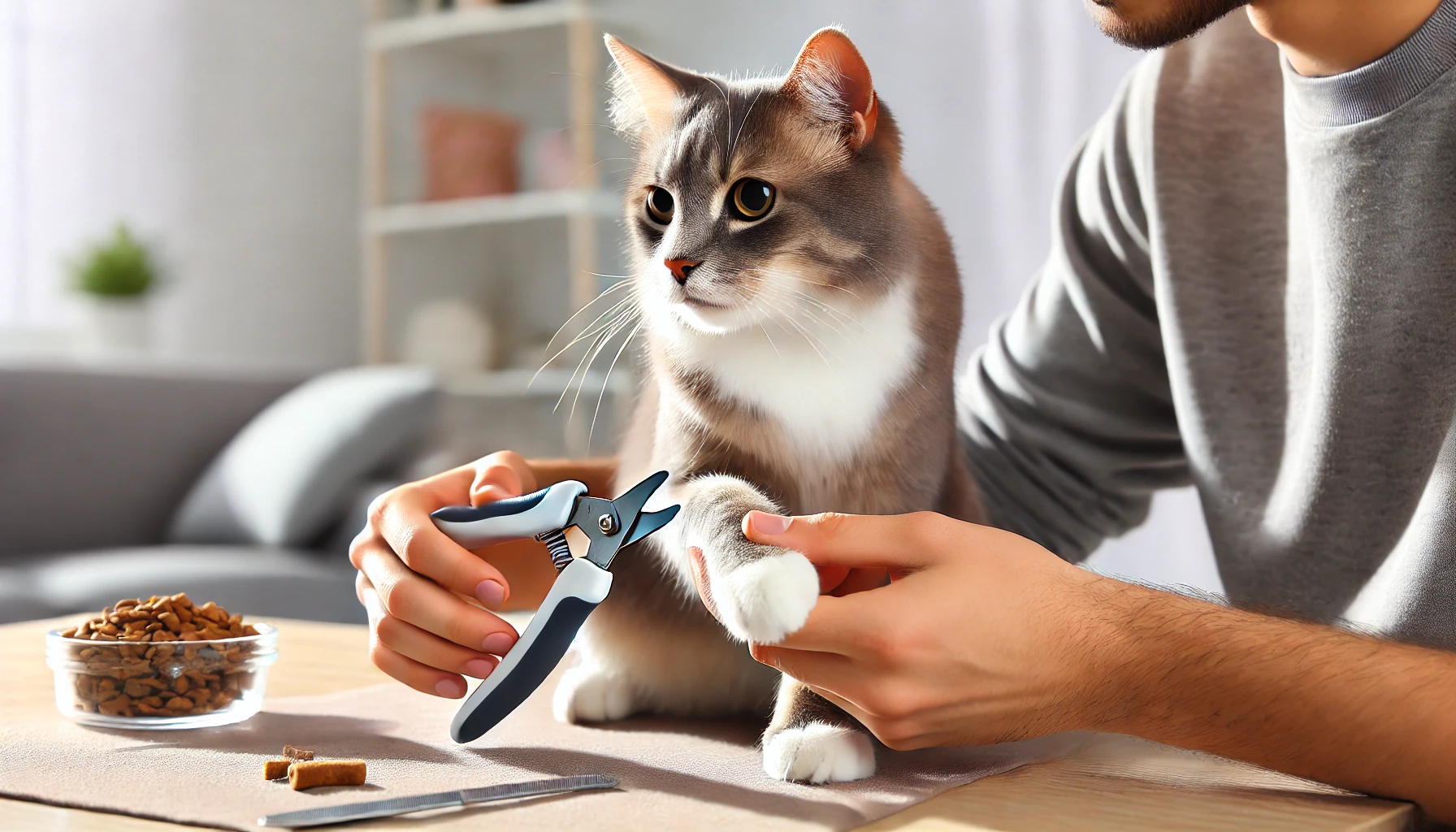
How to Trim Your Cat’s Nails: Managing Cat Nails
Trimming your cat’s nails is essential to prevent them from growing too long or sharp, which could lead to painful breaks or furniture scratches.
Here’s how to properly trim your cat’s nails:
- Get your cat accustomed to handling: Handle your cat’s paws gently and regularly to get them used to it before trimming.
- Use cat-specific clippers: Clippers designed for cats ensure a clean, safe cut.
- Avoid the quick: Trim only the tip of the nail, avoiding the pink part (the quick) where blood vessels are located.
- Take breaks if needed: If your cat becomes stressed, take a break and continue when they are calmer.
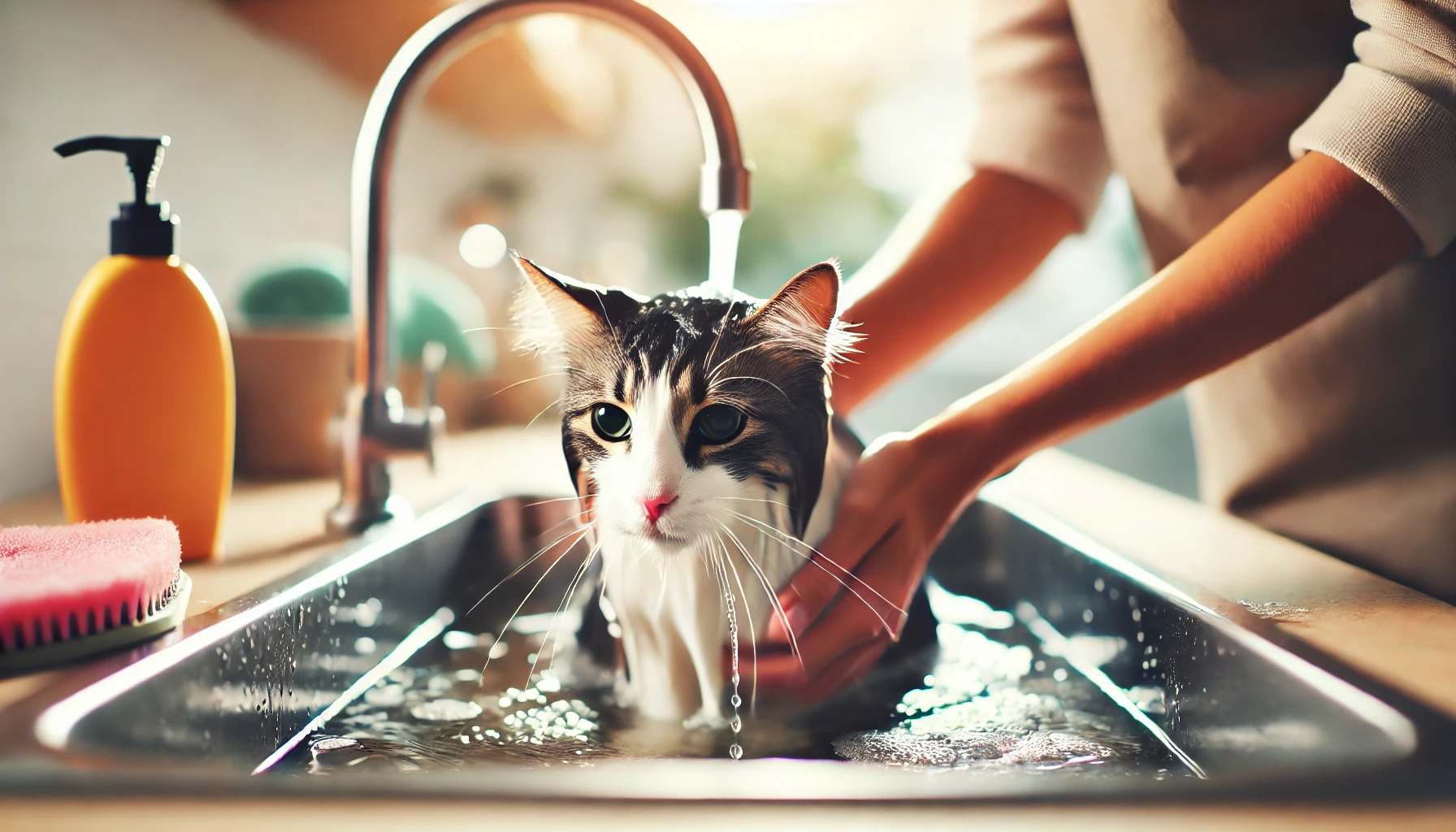
Bathing Your Cat: Best Practices
Not all cats require frequent bathing, but there are times when a bath might become necessary.
Here are some tips for making bath time easier:
- Prepare the space: Line the sink or tub with a non-slip mat, and have your supplies—such as cat shampoo and towels—ready nearby.
- Use lukewarm water: Fill the sink or tub with a few inches of lukewarm water to ensure your cat is comfortable.
- Be gentle but thorough: Wet your cat’s fur with lukewarm water, apply shampoo carefully, avoiding the face, and rinse thoroughly to remove all soap.
- Dry properly: Pat your cat dry with a soft towel and keep them warm after the bath.
- Reward: Offer treats after the bath to make the experience more positive for your cat.
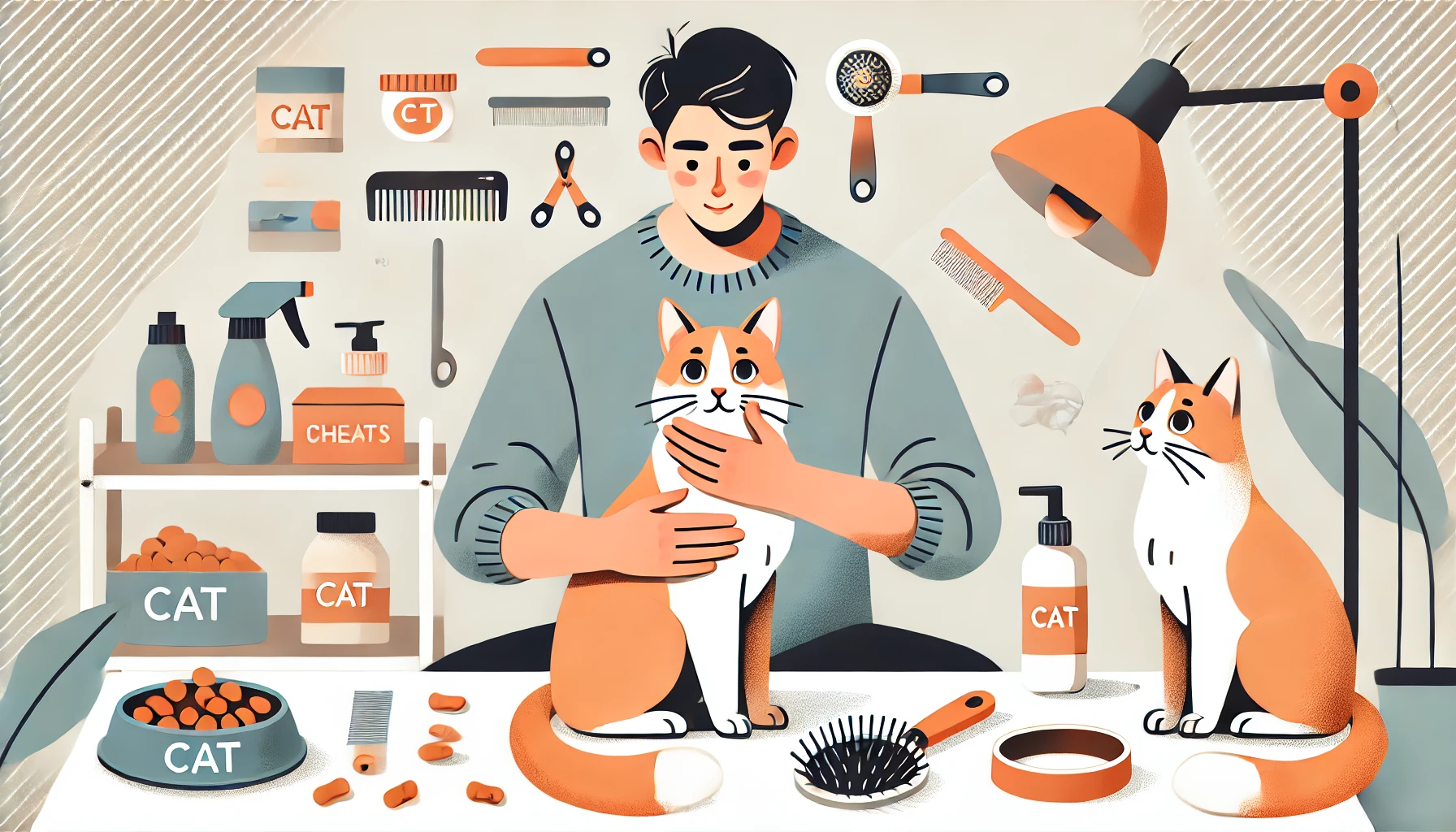
Common Grooming Challenges and How to Overcome Them
There are some unique challenges associated with regular grooming of your cat, especially if your feline friend is not too fond of it.
From cats that don’t like to be brushed to tangles and matted fur, knowing how to deal with these issues makes grooming a much easier task for both of you.
The following section explores some common grooming challenges and offers tips on how to overcome them.
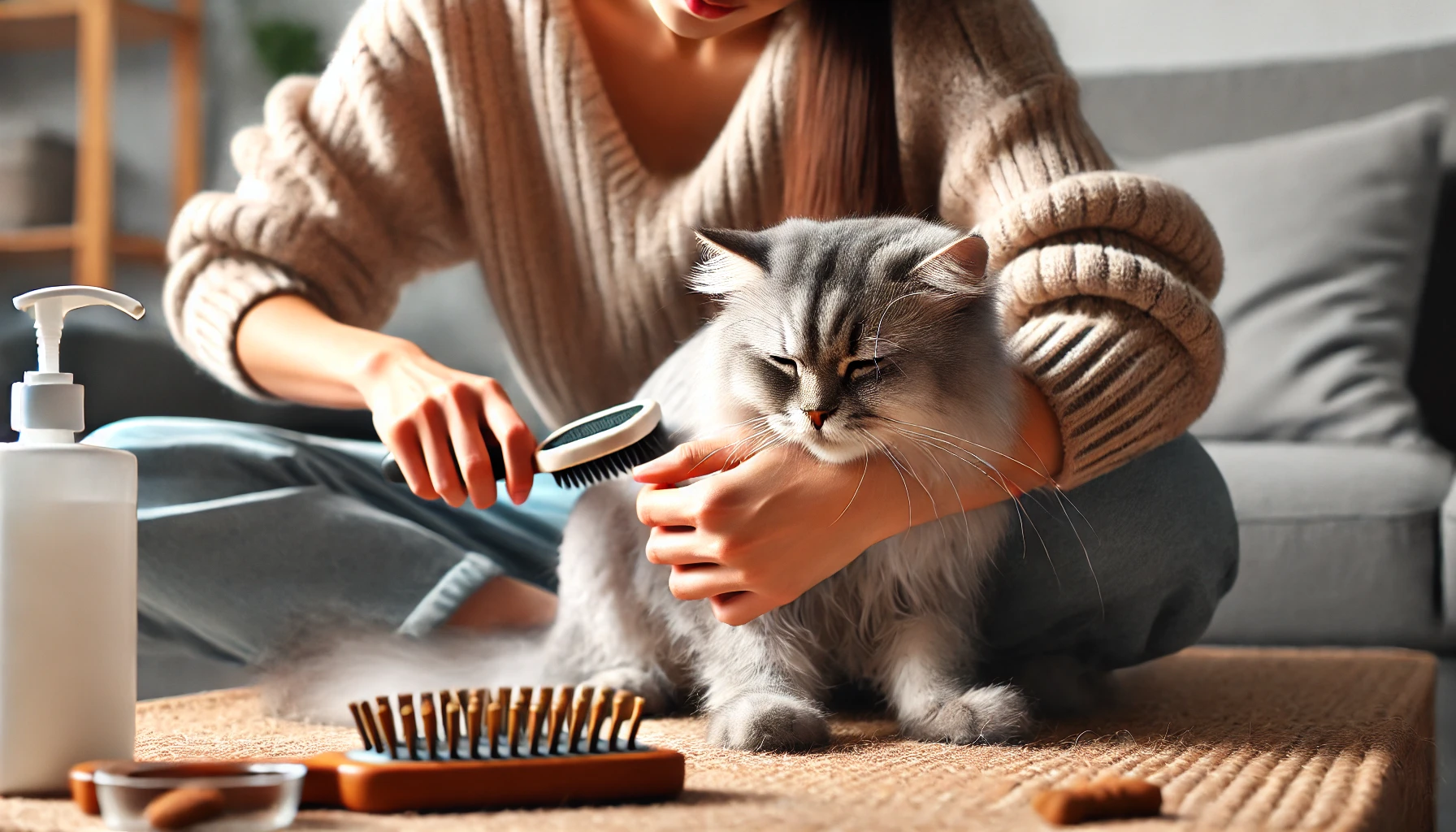
Dealing with Cats That Do Not Like Grooming
Not all cats enjoy grooming.
Whether it’s brushing, bathing, or trimming nails, your cat might find the process unbearable.
Making grooming comfortable for your cat involves the following:
- Slow and build trust: Start grooming sessions slowly and for short periods. Gradually increase the length as your cat gets accustomed to it.
- Create a positive association: Offer treats before, during, and after grooming to create a positive connection.
- Calming techniques: Use calming sprays, pheromone diffusers, or soft music to help your cat relax during grooming.
- Stick to a routine: Perform grooming at the same time and place to help your cat become familiar with the process.
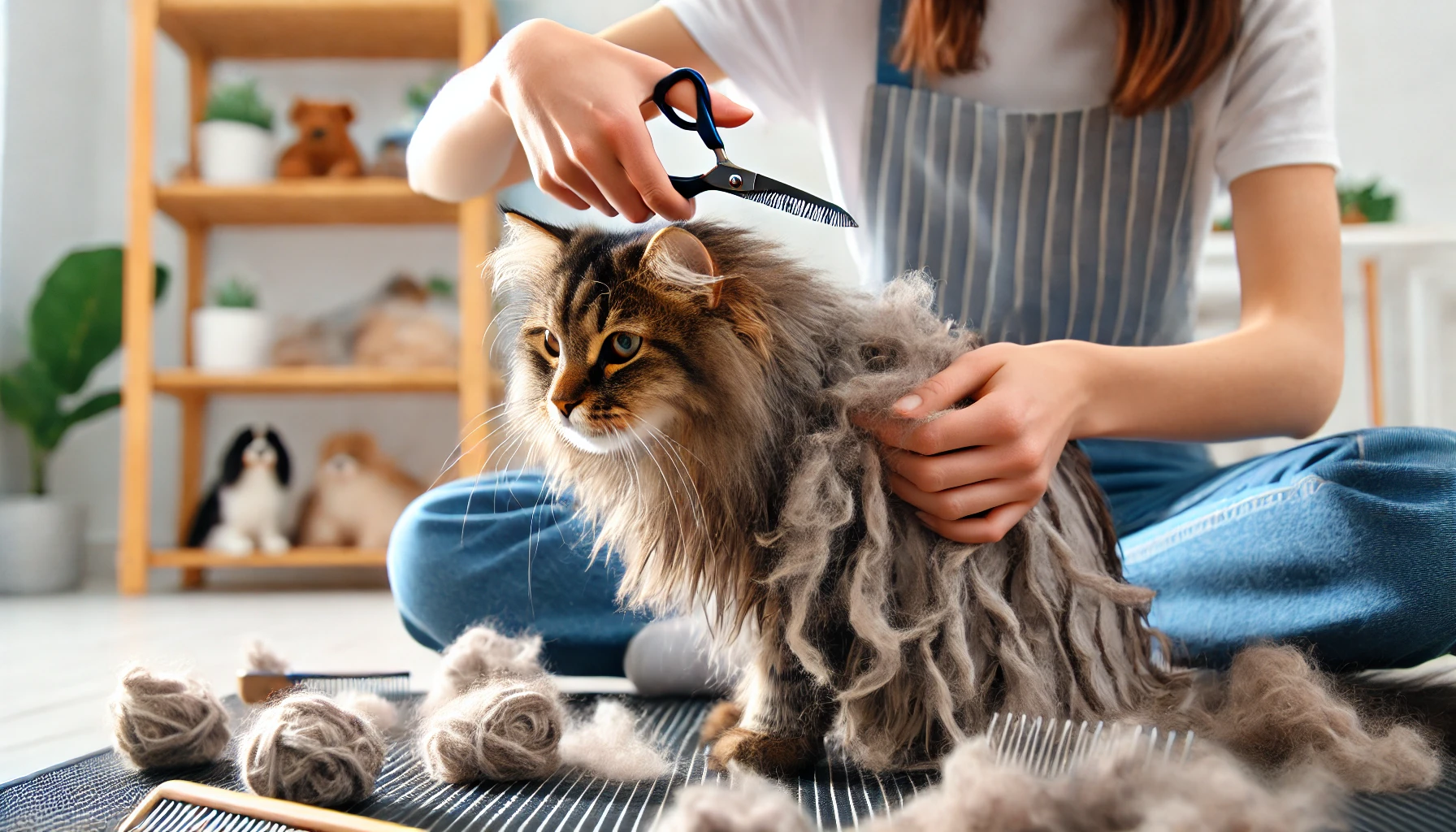
How to Handle Knots, Tangles, and Matted Fur
Long-haired cats are particularly prone to developing tangles or mats in their coat.
If left unattended, mats can become painful, pulling on the skin and causing irritation.
Here’s how to manage them:
- Use the right equipment: A wide-toothed comb or mat splitter is useful for gently breaking apart tangles. Avoid pulling on the mat, as this can cause pain.
- Work from the edges: Start at the edges and work toward the center to gradually loosen the knot.
- Cut out severe mats: If a mat is too tight or close to the skin, use blunt-ended scissors to carefully cut it out. If you’re unsure, consult a professional groomer.
- Prevent mats with regular brushing: Brushing daily can prevent tangles and mats from forming in the first place.
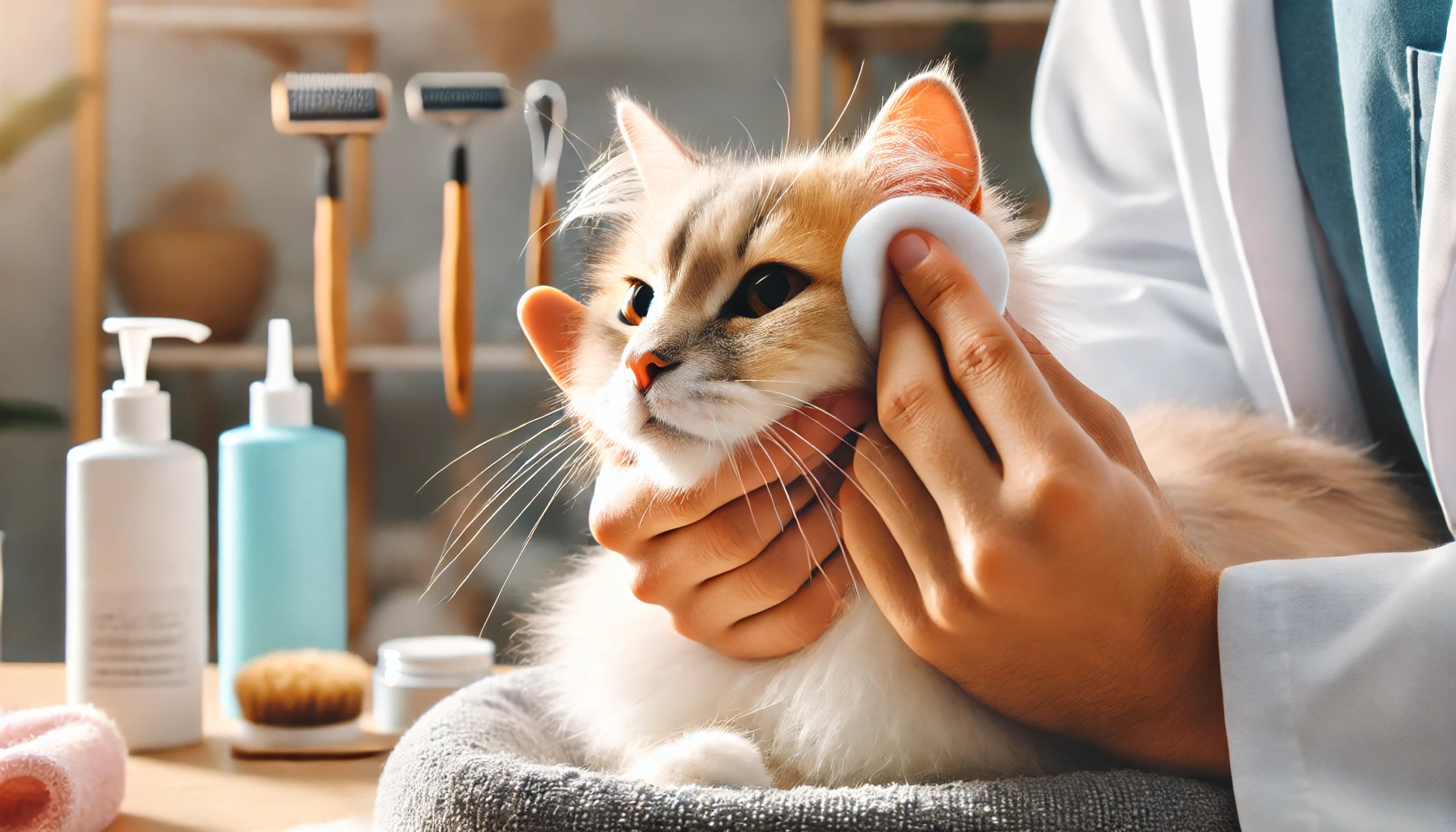
Addressing Skin Irritations and Sensitivities
Cats can sometimes have skin irritations or sensitive skin, making grooming uncomfortable.
Here’s how to handle this issue:
- Check for underlying issues: If your cat’s skin is red or inflamed, check for allergies, fleas, or other conditions that may be causing discomfort.
- Use gentle products: Opt for hypoallergenic shampoos and grooming products that are designed for sensitive skin to avoid further irritation.
- Brush softly: Use a soft-bristle brush and gentle strokes, especially around sensitive areas, to prevent aggravating the skin.
- Consult a vet: If the irritation persists, consult your veterinarian to rule out any medical conditions.
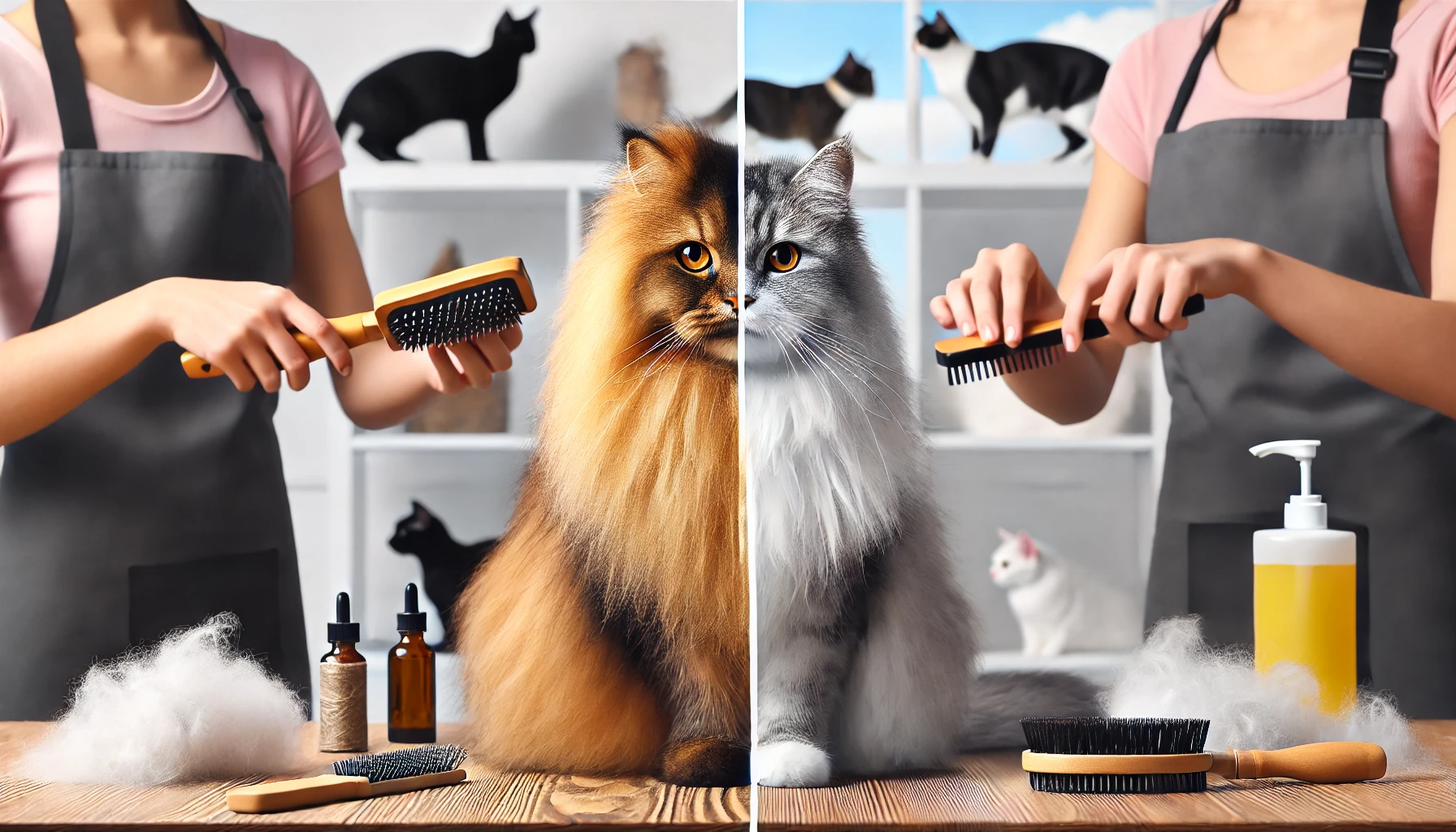
Grooming Long-Haired vs. Short-Haired Cats
Grooming needs vary between long-haired and short-haired cats.
Understanding these differences can make the grooming session easier:
- Long-haired cats: They require more frequent grooming, ideally daily, to prevent mats and tangles. Use a slicker brush or wide-toothed comb to keep their fur smooth.
- Short-haired cats: These cats require less frequent grooming, about once or twice a week, with a soft-bristle brush or grooming glove to remove loose hair.
- Special attention areas: Long-haired cats are prone to mats around their belly, legs, and armpits, so pay extra attention to these areas during grooming.
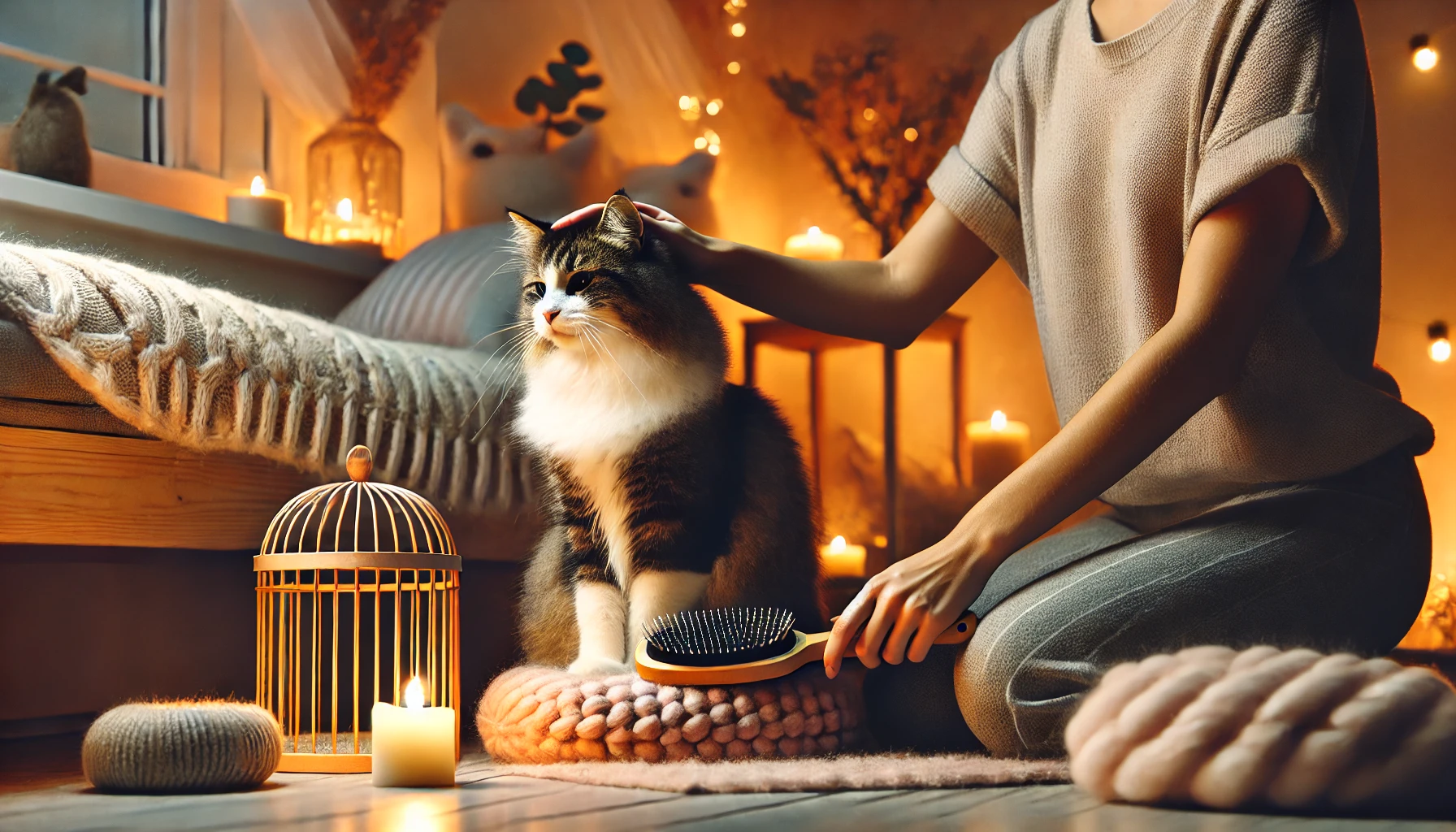
How to Keep Your Cat Calm During Grooming Sessions
Keeping your cat calm during grooming can be difficult, especially if they are anxious or full of energy.
Here’s how you can maintain a soothing environment:
- Create a quiet environment: Ensure the grooming area is quiet and free from distractions. Dim the lights if possible, as a darker room can help soothe your cat.
- Take breaks when necessary: If your cat becomes stressed, take a break and allow them to relax before resuming grooming.
- Soothing voice and gentle touch: Speak softly and use gentle touches to help your cat feel secure during grooming.
- Seek professional help: If your cat remains anxious or aggressive during grooming, it may be best to seek assistance from a professional groomer or veterinarian.
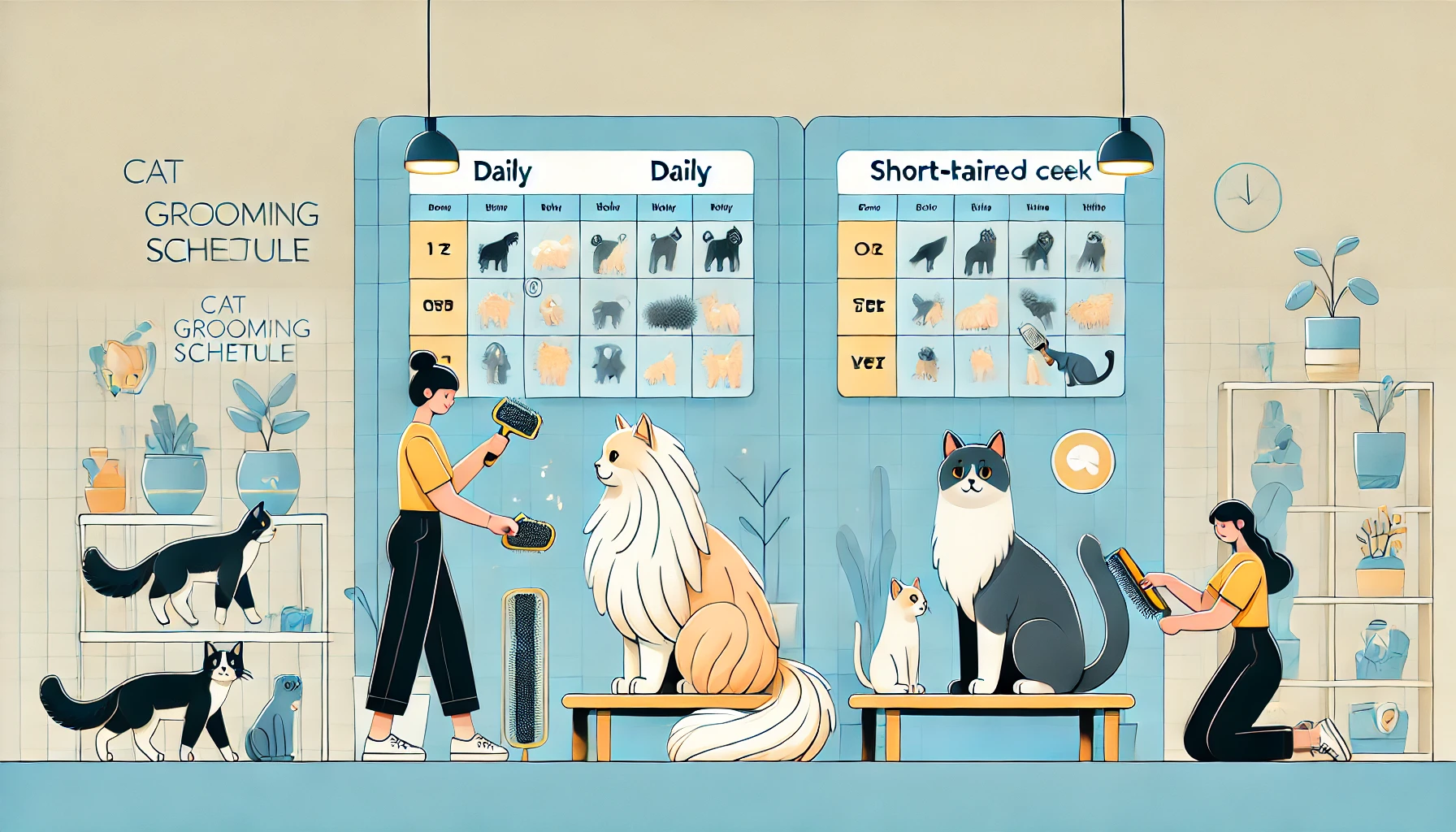
How Often Should You Groom Your Cat?
Grooming frequency is one of the most crucial things to help your cat remain healthy and comfortable.
Of course, cats are naturally great at self-grooming, but this ability can be influenced by factors such as breed, hair length, and any ailments the cat might have.
Grooming your cat can be done too frequently or not frequently enough, so some balancing is required.
In this section, we will explore how often you should engage in regular grooming based on various factors, and when you might want to consult a professional groomer.
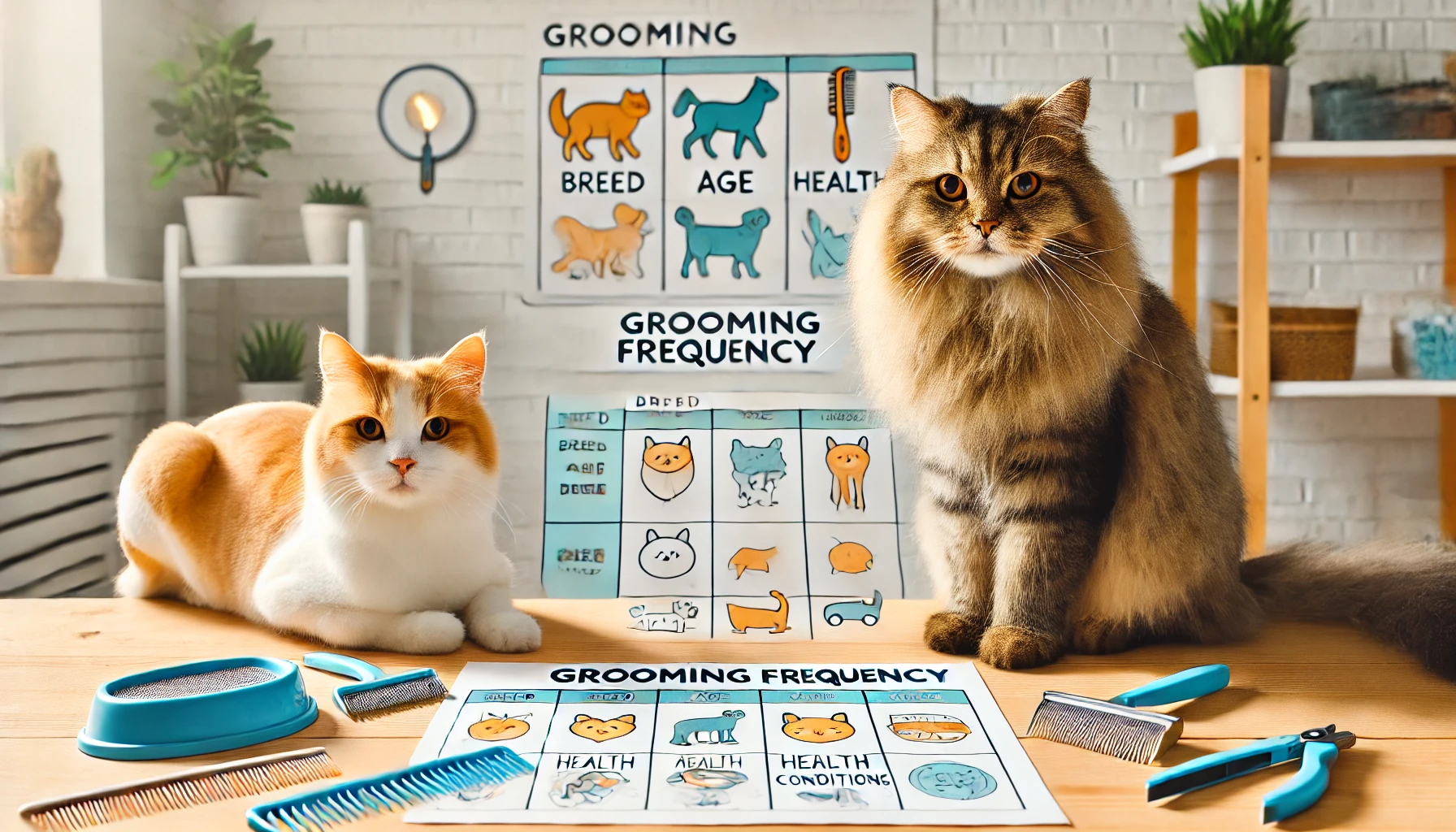
Factors That Determine Frequency of Grooming
Not all cats have the same grooming needs.
Several factors influence how often you should groom your cat:
- Breed: Long-haired breeds like Persians or Maine Coons need daily grooming to prevent matting. Short-haired breeds, like the American Shorthair, may only need grooming once or twice a week.
- Age: As cats get older, they do not groom themselves as well as younger ones. Senior cats, therefore, require more frequent grooming sessions to maintain their coat and skin health.
- Health conditions: Cats with specific health conditions such as obesity, arthritis, or skin diseases may need extra attention and help with grooming.
- Shedding seasons: Cats shed the most during spring and autumn, requiring more frequent brushing during these periods.
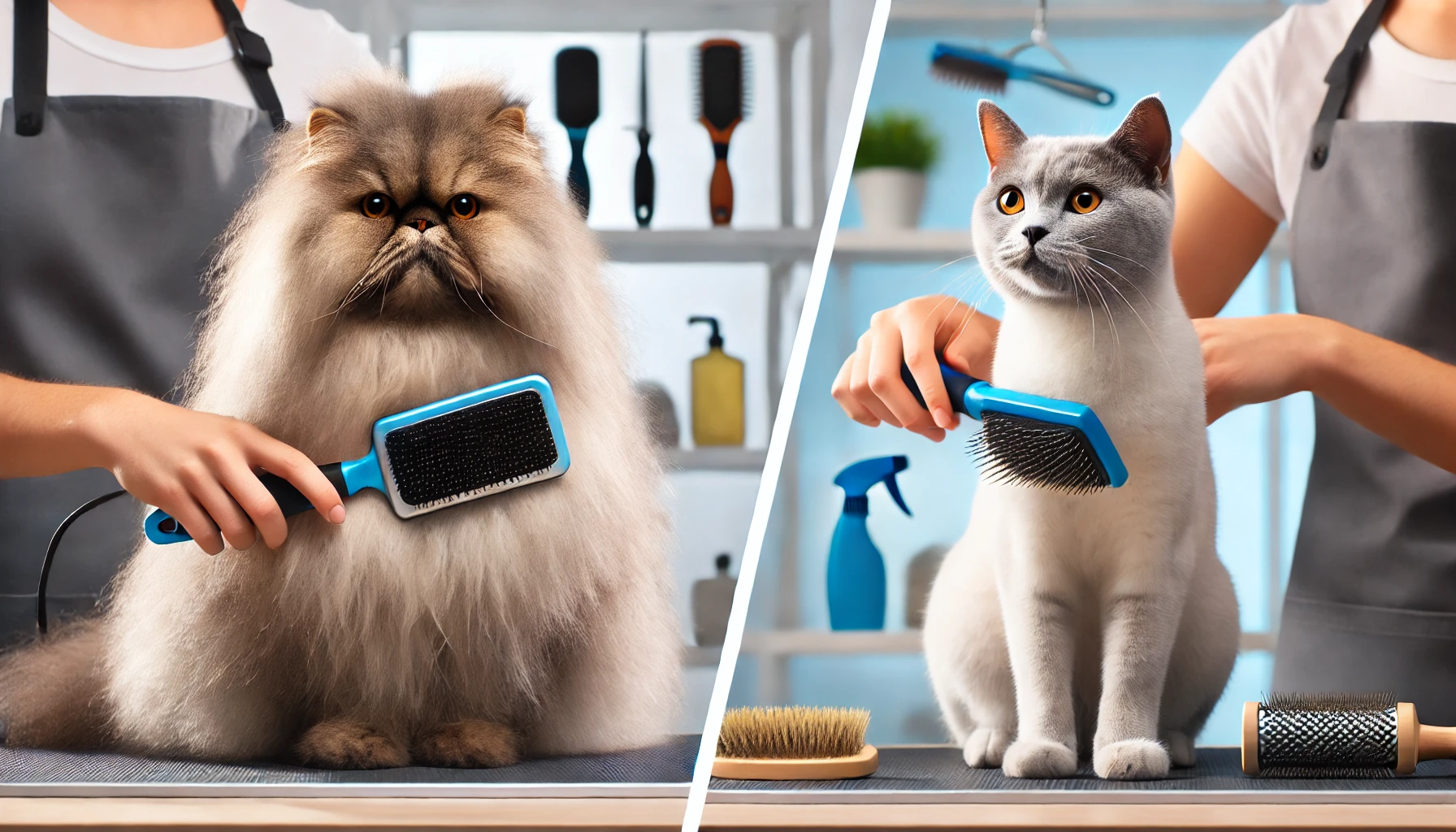
Grooming Needs According to Breed Type
Your cat’s grooming needs are greatly influenced by their breed and hair type.
Here’s how you can groom several common types of cats:
- Long-haired cats: Cats such as Persians or Himalayans require daily grooming to prevent tangles and remove loose fur.
- Short-haired cats: Breeds like the British Shorthair or Siamese typically need grooming once or twice a week to remove dead fur and maintain a healthy coat.
- Hairless cats: Cats like the Sphynx need regular baths since they lack fur to absorb oils that can build up on their skin.

Seasonal Grooming Considerations
Seasonal changes also dictate how often you must groom your cat.
Cats shed heavily, especially during spring and fall as they transition between their summer and winter coats.
Here’s how you can adjust your grooming routine according to the seasons:
- Spring shedding: During spring, cats lose their winter coat to prepare for warmer weather. Increase brushing frequency to help them remove loose fur and prevent matting.
- Fall shedding: Cats grow a thicker coat for winter during the fall. Regular grooming helps manage shedding and minimizes hairballs.
- Summer baths: Some cats may require occasional baths during summer to stay cool and clean, especially if they spend time outdoors.
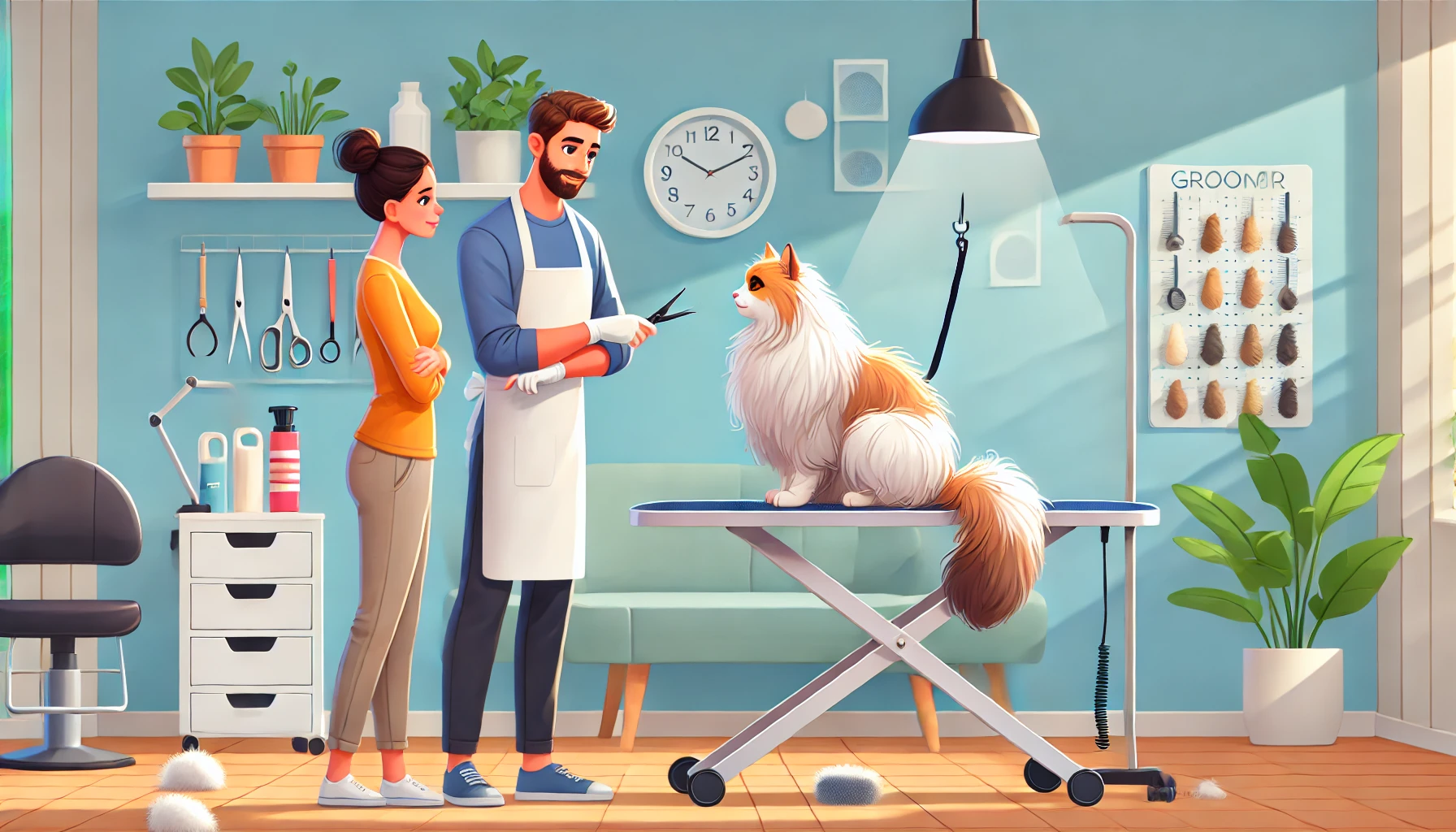
When to Seek Professional Grooming Help
While most cats can be groomed at home, there are instances where professional help is necessary.
Here are a few signs that you should take your cat to a professional groomer:
- Severe matting: If your cat’s fur is severely matted and you’re unable to remove the tangles at home, a professional groomer can safely detangle and trim the fur.
- Skin conditions: Cats with skin irritations or sensitive skin may require specialized care from a groomer trained to handle delicate skin.
- Behavioral problems: If your cat becomes aggressive or stressed during grooming, a professional groomer experienced in handling anxious cats can make the process smoother.
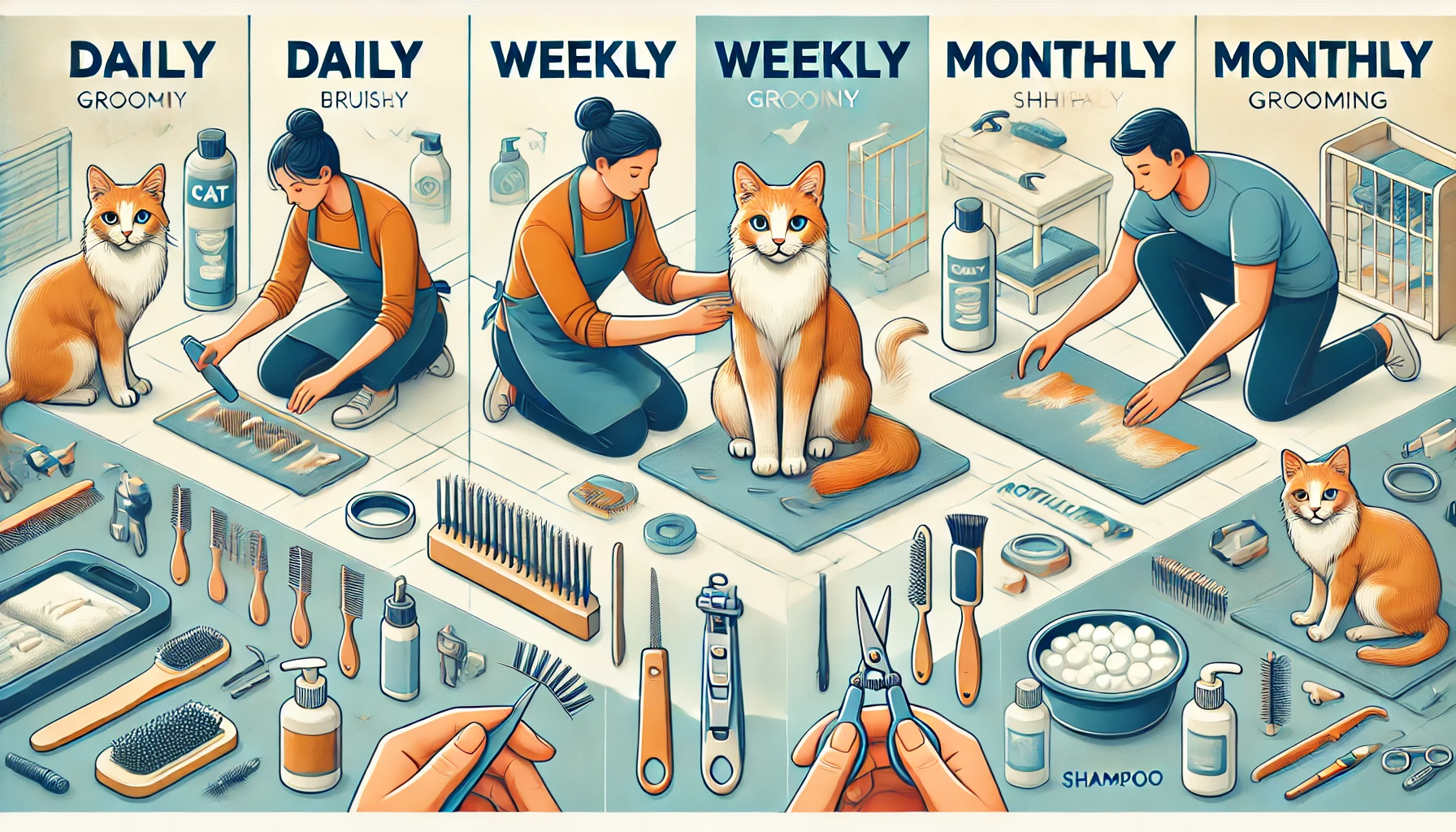
Daily, Weekly, and Monthly Grooming Routines
Setting up a regular grooming routine will help keep your cat’s coat in good condition and free of tangles.
Here’s a breakdown of what you can do daily, weekly, and monthly:
- Daily grooming: Brush long-haired cats every day to prevent tangling and matting. During this time, check for signs of skin problems or parasites.
- Weekly grooming: For short-haired cats, groom them once or twice a week to remove loose fur. Check their ears and trim their nails if needed.
- Monthly grooming: Bathe your cat every 4–6 weeks if necessary. Use a cat-safe shampoo, especially if your cat has a skin condition or is a hairless breed.
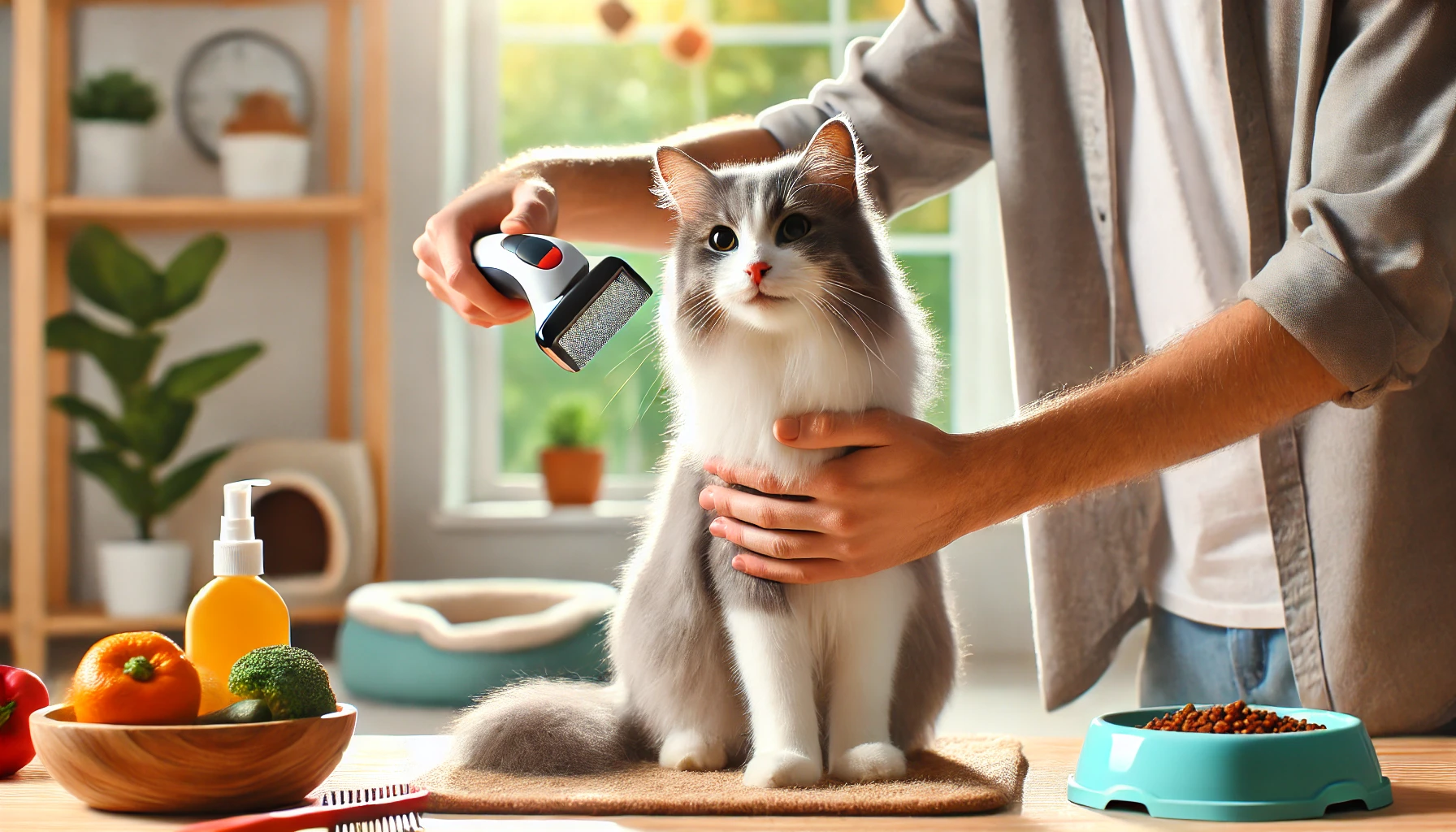
Keeping Your Cat Healthy with Regular Grooming
Regular grooming is an essential part of your cat’s health and comfort.
Whether your cat is a long-haired or short-haired breed, grooming does much more than just making them look good—it keeps them comfortable, healthy, and happy.
Regular grooming is necessary for maintaining hygiene, preventing diseases, and giving your feline friend the care they deserve.
Let’s go over what we covered in this guide to regular grooming for cats.
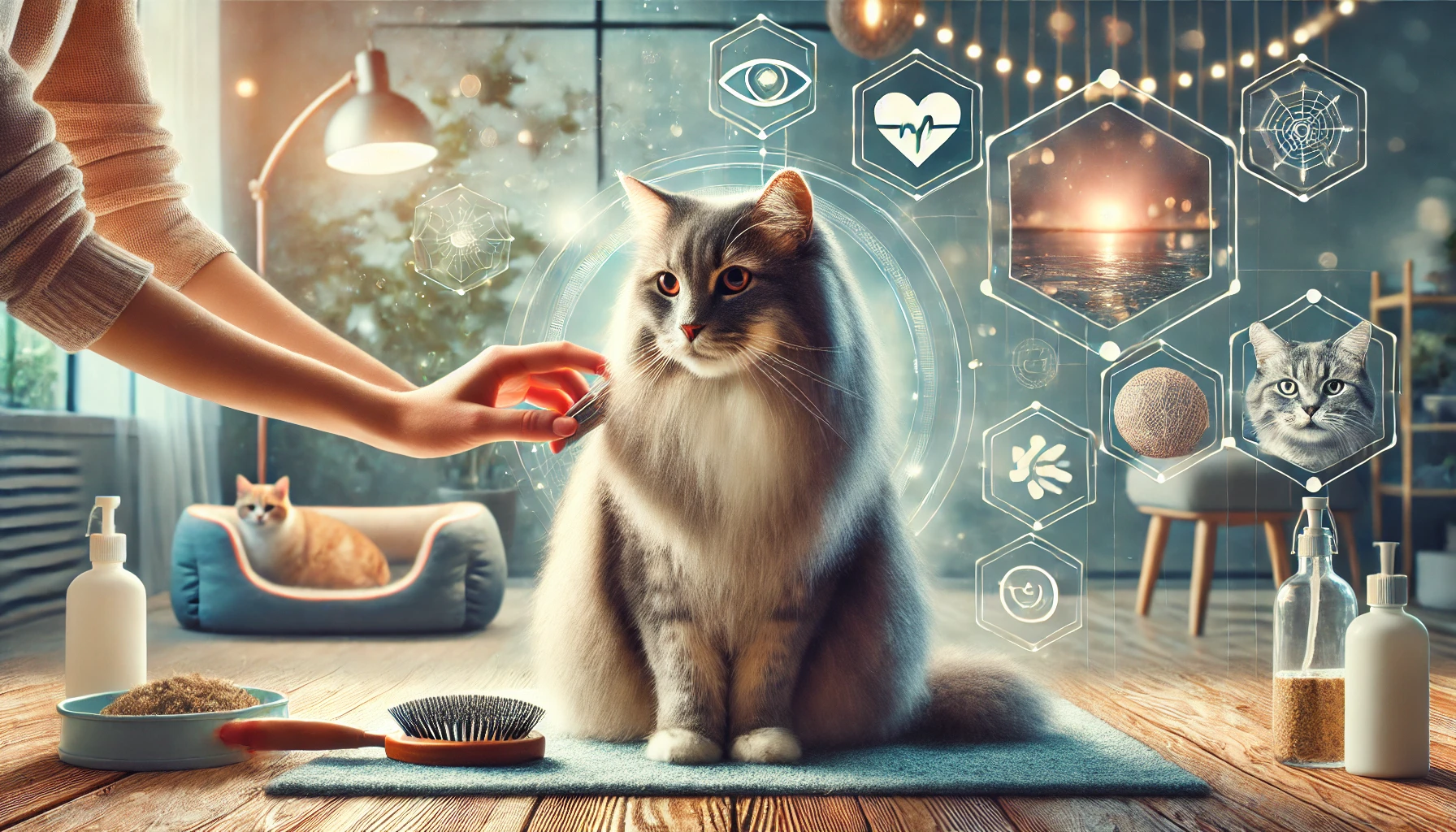
Physical and Mental Benefits of Regular Grooming
Regular grooming has numerous physical and psychological benefits for your cat.
It removes loose fur, prevents hairballs, and ensures the overall health and shine of the skin and coat by distributing natural oils.
Grooming also provides an opportunity to detect skin problems, lumps, or parasites early.
Additionally, regular grooming sessions allow you to bond with your cat, helping them feel safe and relaxed.
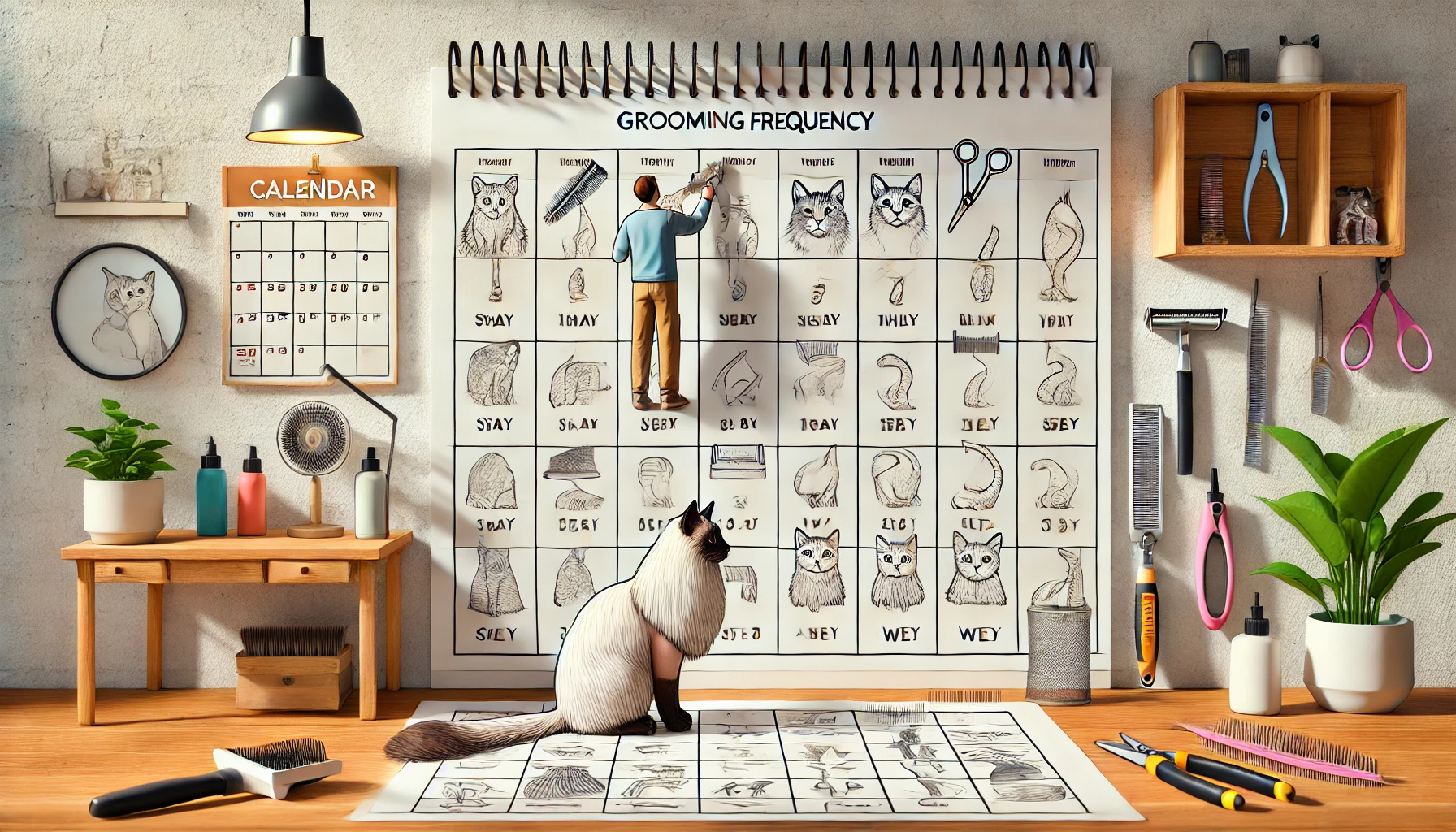
Understanding Grooming Frequency
The frequency of grooming depends on your cat’s breed, hair length, age, and health conditions.
Long-haired cats like Persians and Maine Coons require daily brushing to prevent mats and tangles, while short-haired breeds may only need grooming once or twice a week.
Seasonal changes, such as shedding during spring and fall, may also increase the need for grooming.
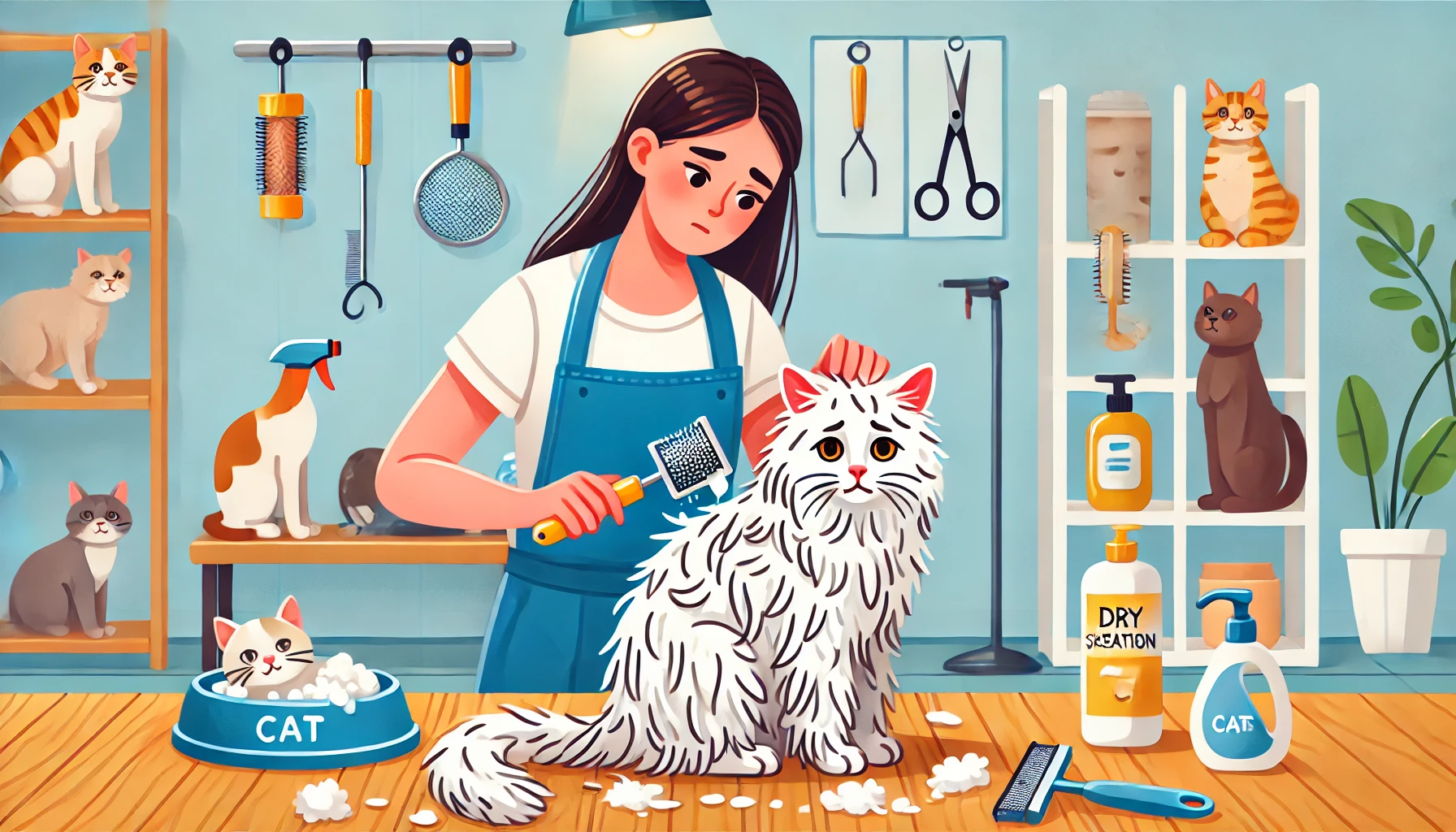
Common Grooming Issues and How to Resolve Them
Grooming can be challenging, especially when your cat is anxious or uncooperative.
Some cats dislike being brushed, while others may have sensitive skin that requires extra care.
Patience and the use of appropriate tools can help you overcome many of these challenges.
The more regular the sessions, the more comfortable your cat will become with the process.
If necessary, calming techniques or professional intervention can also be helpful.
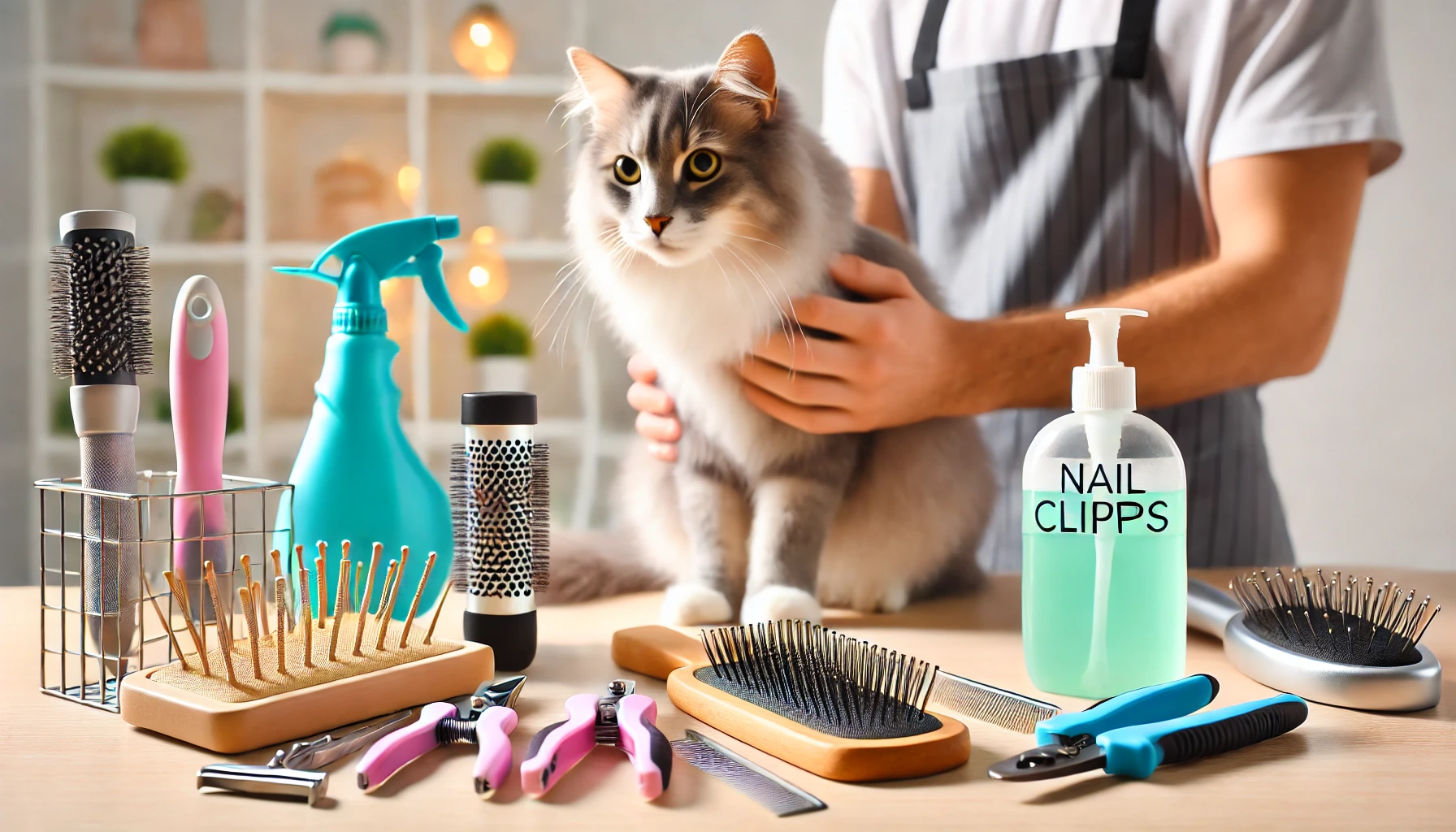
Grooming Tools and Techniques
Having the right grooming tools is crucial for effective grooming.
These tools include brushes and combs suited to your cat’s hair length, nail clippers, and non-irritating cat-safe shampoo.
Establishing a consistent grooming routine—whether daily, weekly, or monthly—helps keep your cat’s coat in top shape, while also addressing other areas such as ear, eye, and dental hygiene.

When to Seek Professional Grooming
While most cats can be groomed at home, certain situations may require professional help.
If your cat’s fur becomes severely matted or they develop skin irritations, a professional groomer can provide the necessary care.
Additionally, if grooming causes too much stress for your cat, it may be more comfortable for them to be groomed by a professional with experience in handling anxious pets.
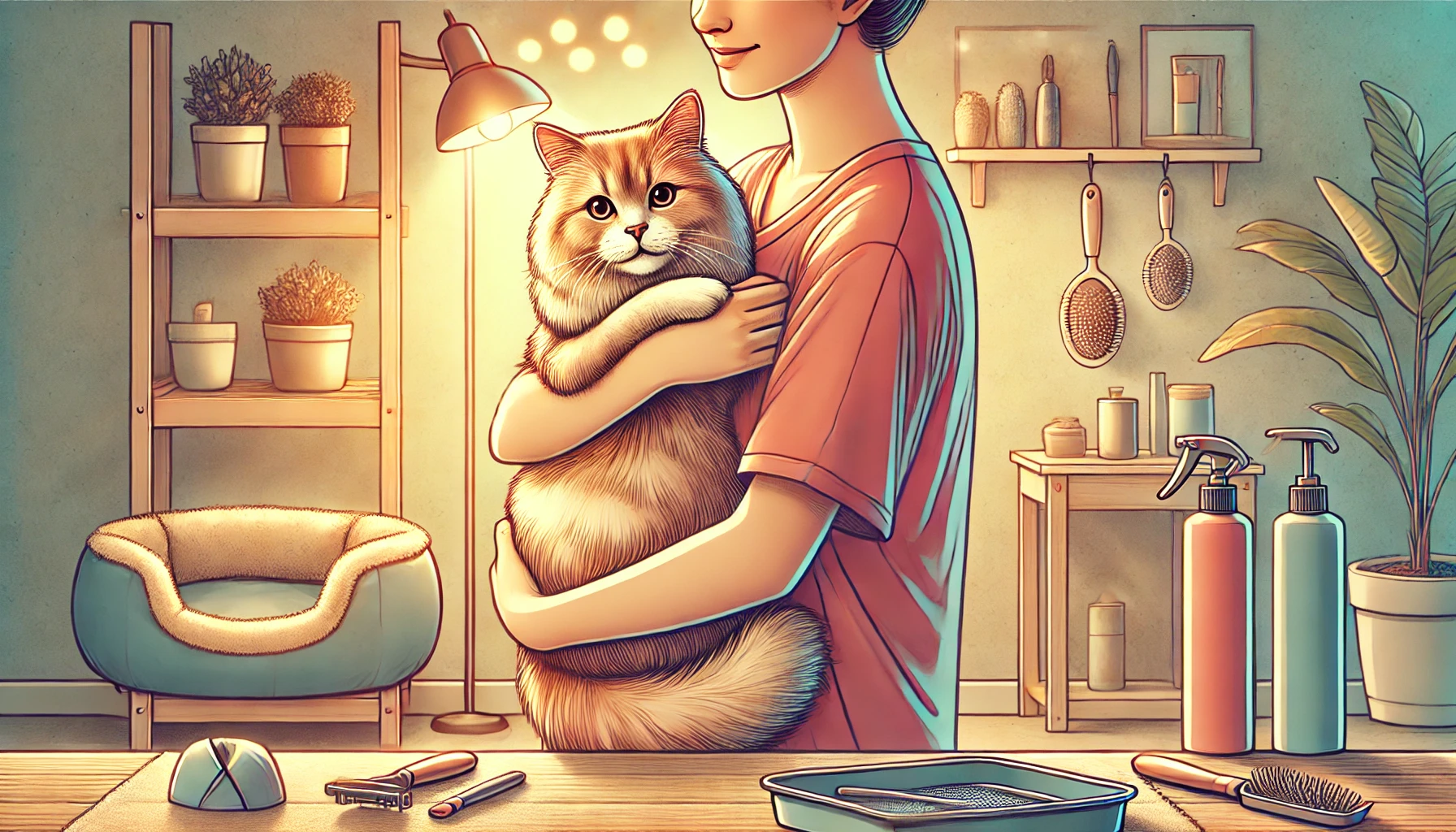
Conclusion
Regular grooming is vital for your cat’s health, comfort, and overall quality of life.
By grooming regularly, you ensure your cat’s coat remains clean and shiny, while also preventing a range of potential health issues.
Whether you groom your cat at home or seek a professional, the time and effort you invest in regular grooming will result in a happier and healthier feline companion.
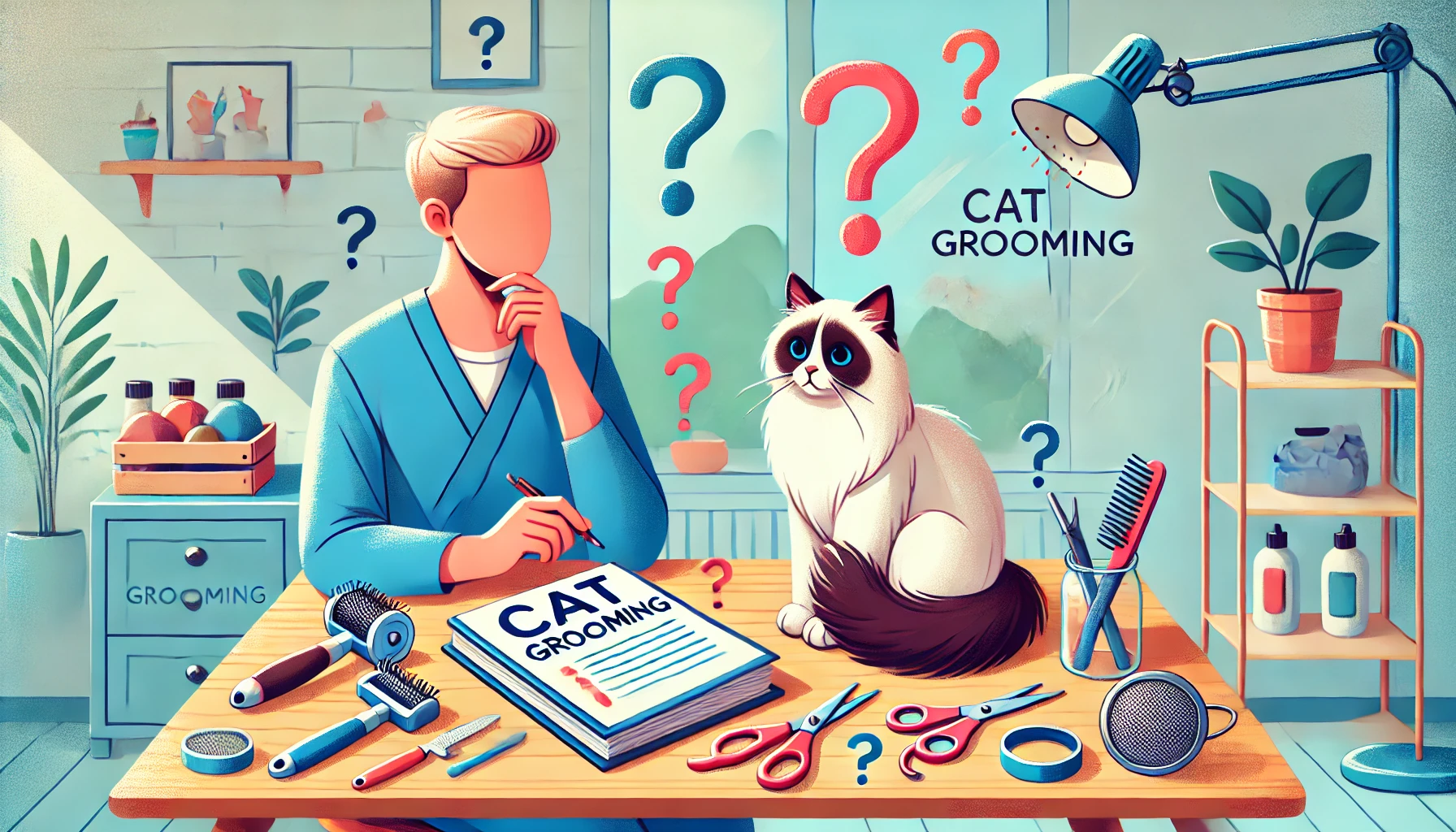
Frequently Asked Questions about Regular Grooming
Regular grooming enables you to build a better relationship with your cat.
Here are some of the most common questions regarding regular grooming for cats, along with informative answers to help you understand its benefits and how to care for your feline friend.
How often should I groom my cat?
The frequency of regular grooming depends on your cat’s breed and hair type.
Long-haired cats may need to be groomed daily, while short-haired breeds may require grooming only once or twice a week.
What are the benefits of grooming my cat?
There are several benefits from regular grooming, including preventing hairballs, keeping the skin and coat healthy, early detection of health issues, and strengthening the bond between you and your cat.
Can I use human shampoo for cats?
No, you should never use human shampoo on your cat, as it can irritate their skin.
Always use a mild, cat-safe shampoo designed specifically for felines.
How do I calm my cat when it's being groomed?
To calm your cat during grooming, create a quiet environment, use gentle strokes, speak softly, and reward them with treats so they learn that grooming can be a positive experience.
What equipment is needed for grooming?
Essential grooming equipment includes a brush or comb suitable for your cat’s hair type, nail clippers for trimming nails, and cat-safe shampoo for occasional baths.
Do all cats need to be groomed?
Yes, all cats should be groomed regularly.
Grooming keeps their coat healthy and reduces shedding, whether they have long or short hair.
How do I prevent mats in my cat's fur?
To prevent mats, brush your cat gently and regularly, especially in high-risk areas.
For long-haired breeds, use a slicker brush to keep their coat smooth.
What if my cat has sensitive skin?
If your cat has sensitive skin, use hypoallergenic grooming products and handle them gently.
Consult your veterinarian for recommendations on how to manage their grooming needs.
How can I tell if my cat requires grooming?
Signs that your cat needs grooming include visible mats or tangles, excessive shedding, dirty fur, and general discomfort when being touched.
Is it safe to bathe my cat?
Yes, it is safe to bathe your cat if needed.
Use lukewarm water and cat-safe shampoo, but remember that most cats groom themselves effectively and may not require frequent baths.
Can grooming help reduce allergies in my home?
Yes, regular grooming can help reduce allergens in your home by minimizing loose fur and dander, creating a cleaner environment for allergy sufferers.
What if my cat won't let me groom them?
If your cat resists grooming, try gradually introducing the process, using calming techniques, and ensuring you have the right tools for their comfort.
Do I have to groom my cat if they have short hair?
Yes, short-haired cats also need regular grooming, though less frequently.
Brush them every one to two weeks to remove loose fur and maintain a healthy coat.
How do I find a professional groomer?
To find a professional groomer, ask for recommendations from your veterinarian, search online for local groomers, and read reviews to ensure quality service.
What if my cat becomes stressed during grooming?
If your cat feels stressed during grooming, give them breaks and use calming aids while creating a relaxing atmosphere to help them feel at ease.
Does my cat need nail trimming?
Yes, nail trimming is necessary on a regular basis to avoid overgrowth and injury.
If your cat isn’t naturally wearing down their nails, trim them every few weeks.
How can I make grooming a positive experience for my cat?
Make grooming a positive experience by rewarding your cat with treats, using gentle strokes, and keeping sessions short.
Follow up with praise or playtime to reinforce positive associations.
What should I look for while grooming?
While grooming, watch for signs of skin problems, lumps, or parasites.
This proactive approach allows for early detection of potential health issues.
What grooming techniques should I use for kittens?
During kitten grooming, use gentle techniques, introduce grooming tools gradually, and keep sessions short to help them become accustomed to the process.
Can I groom my cat while they are sitting in my lap?
Yes, grooming your cat while they are sitting in your lap can be comforting for them.
Just ensure you have all the necessary tools within reach for a smooth process.



